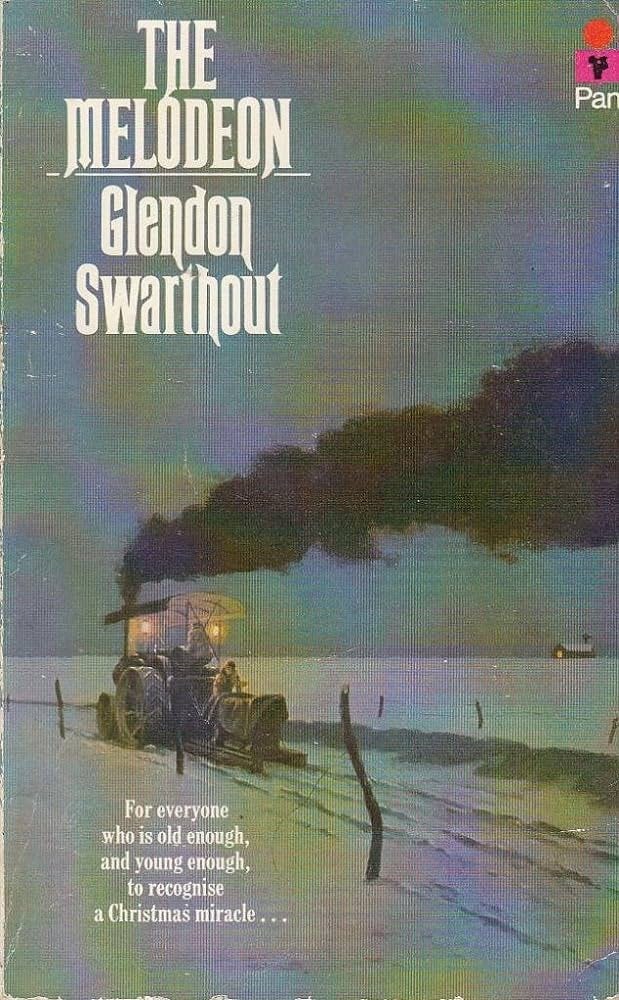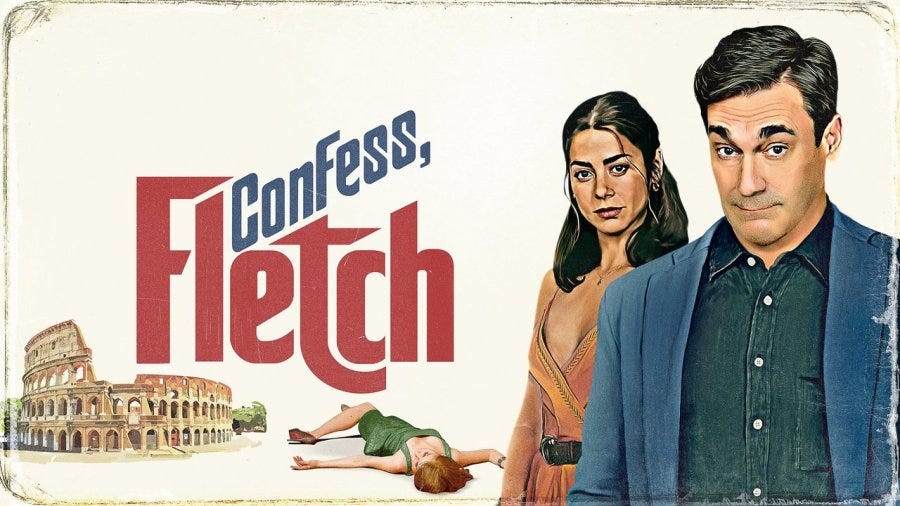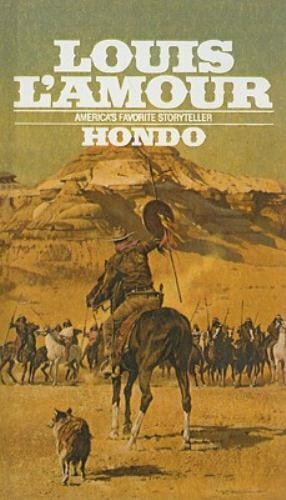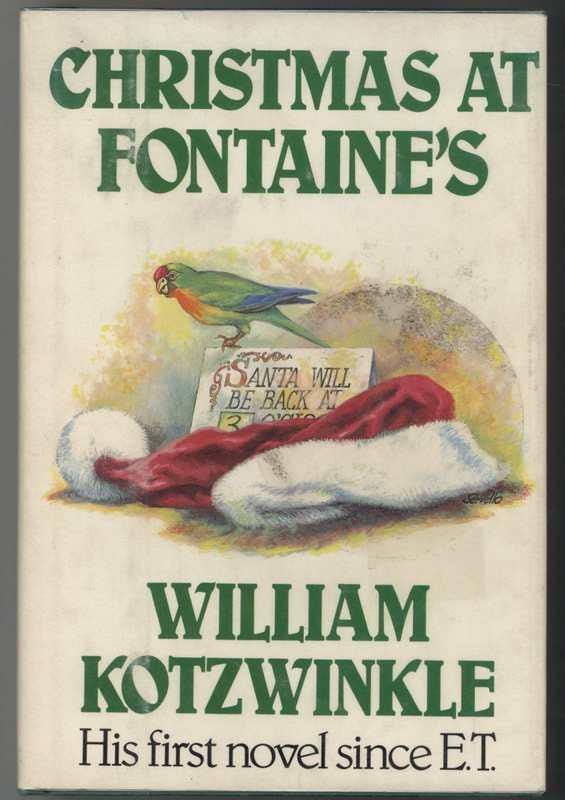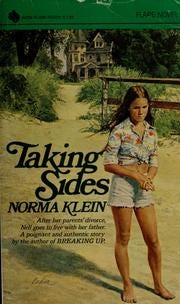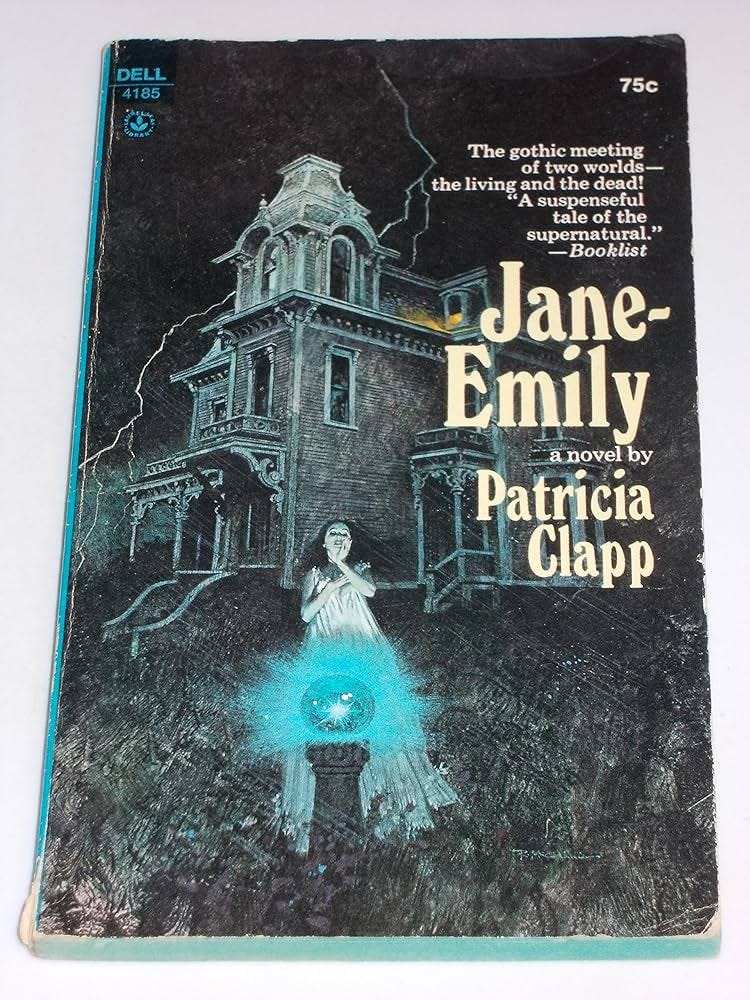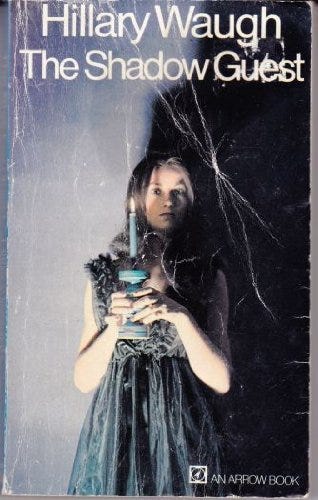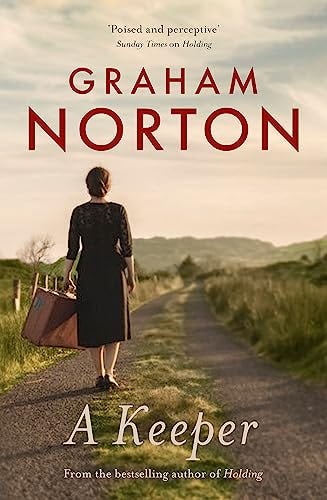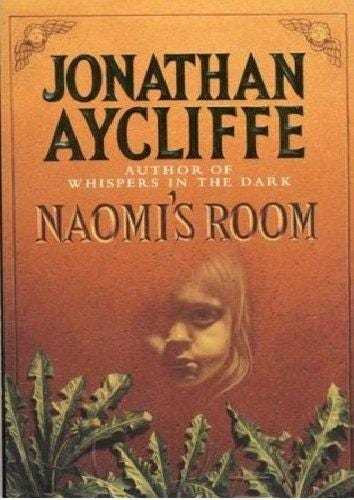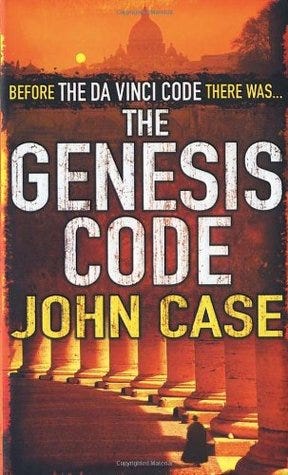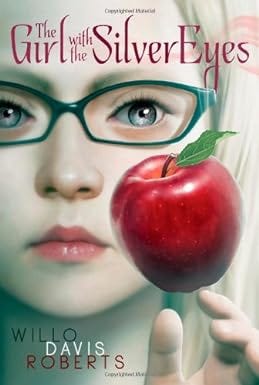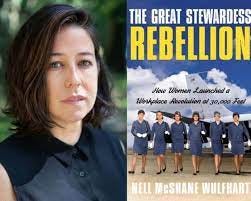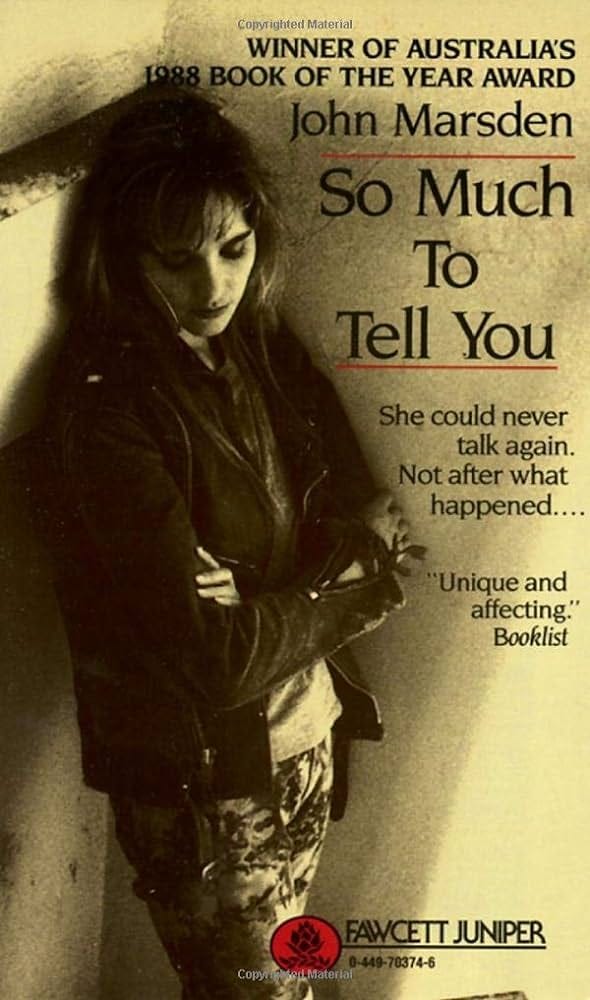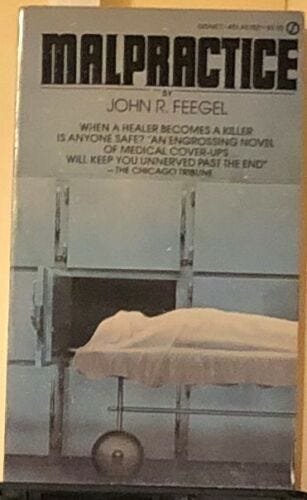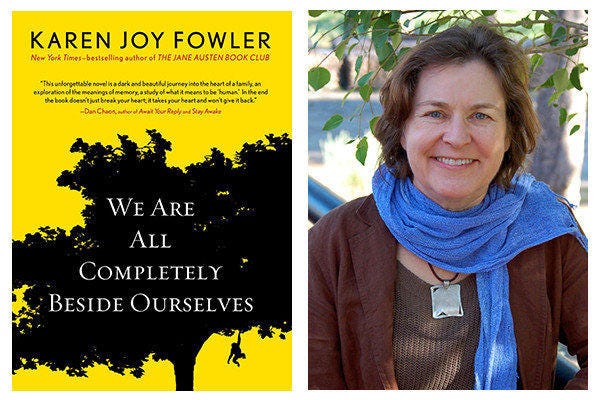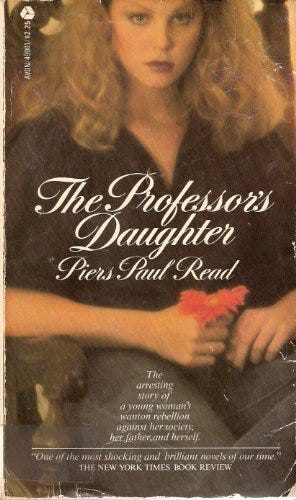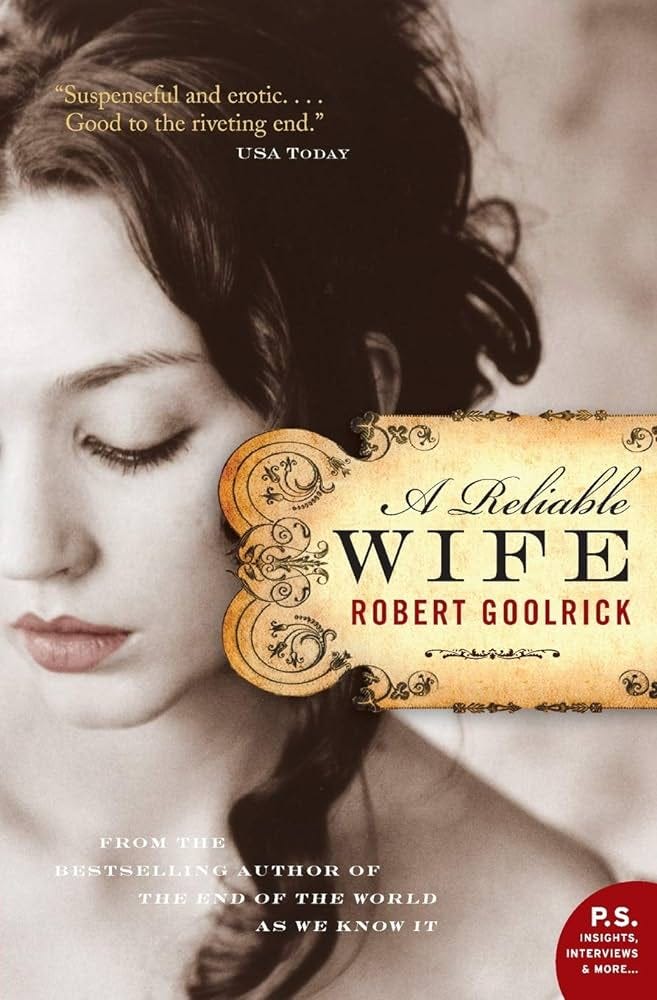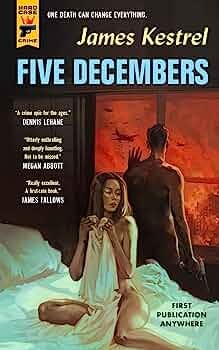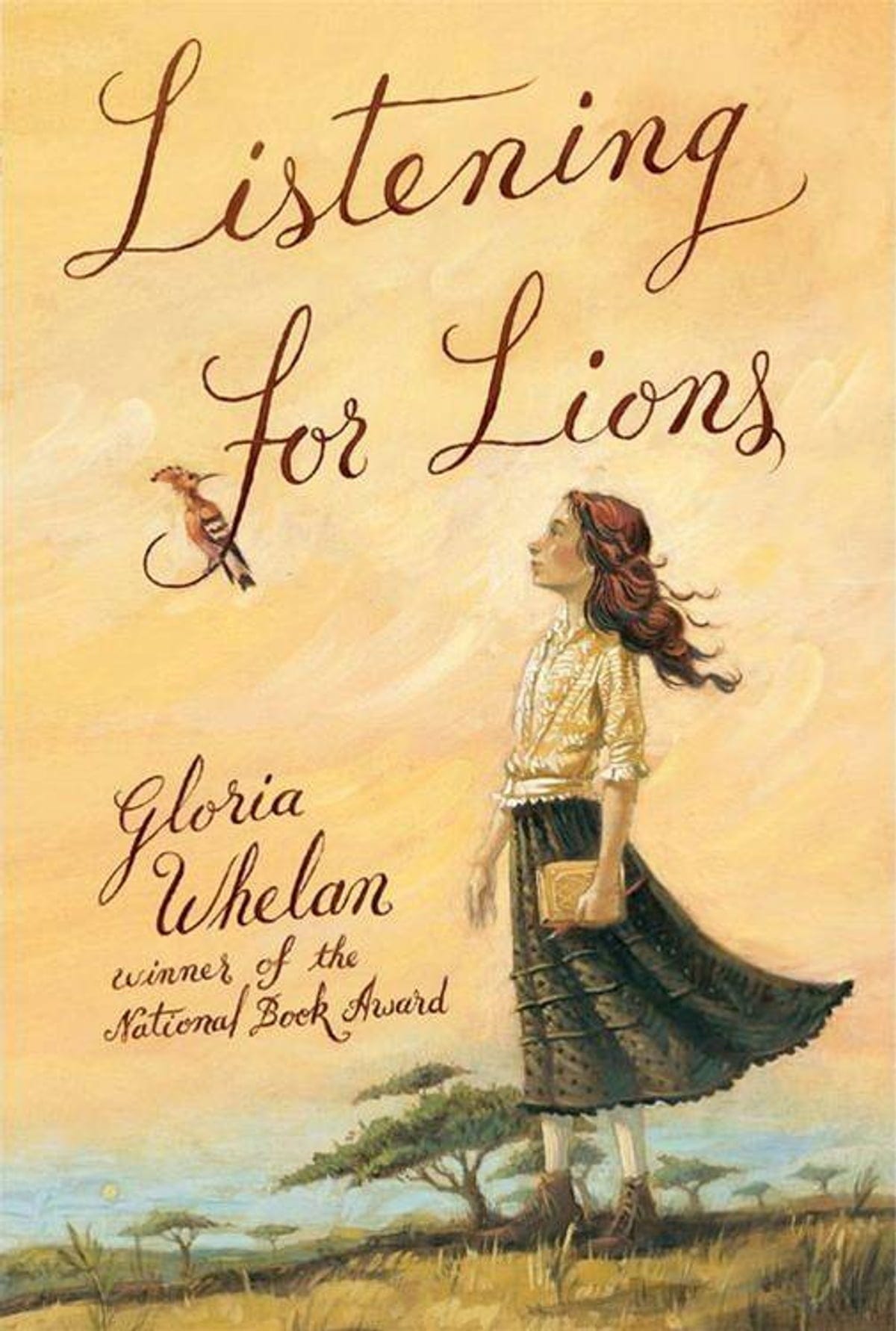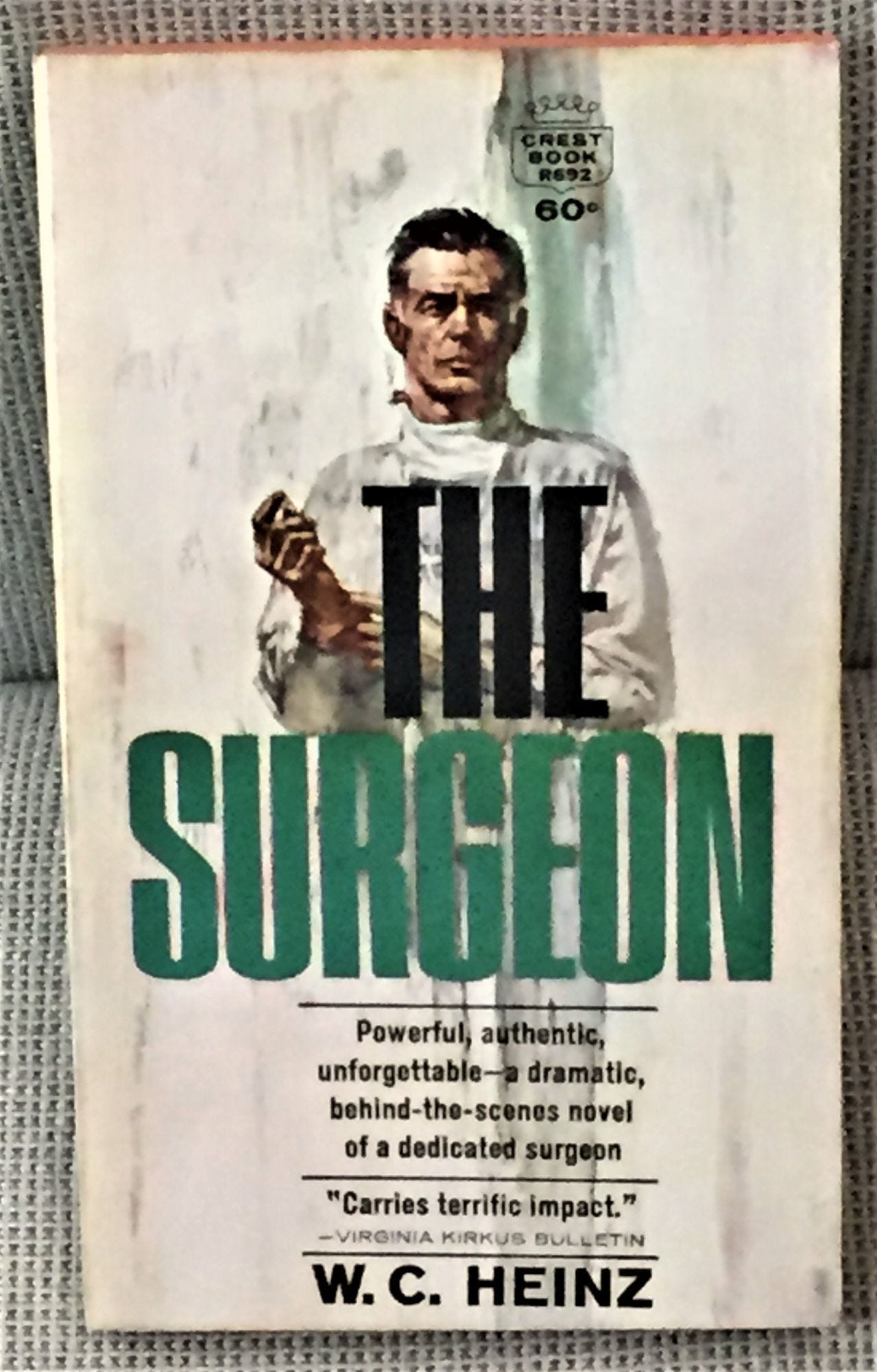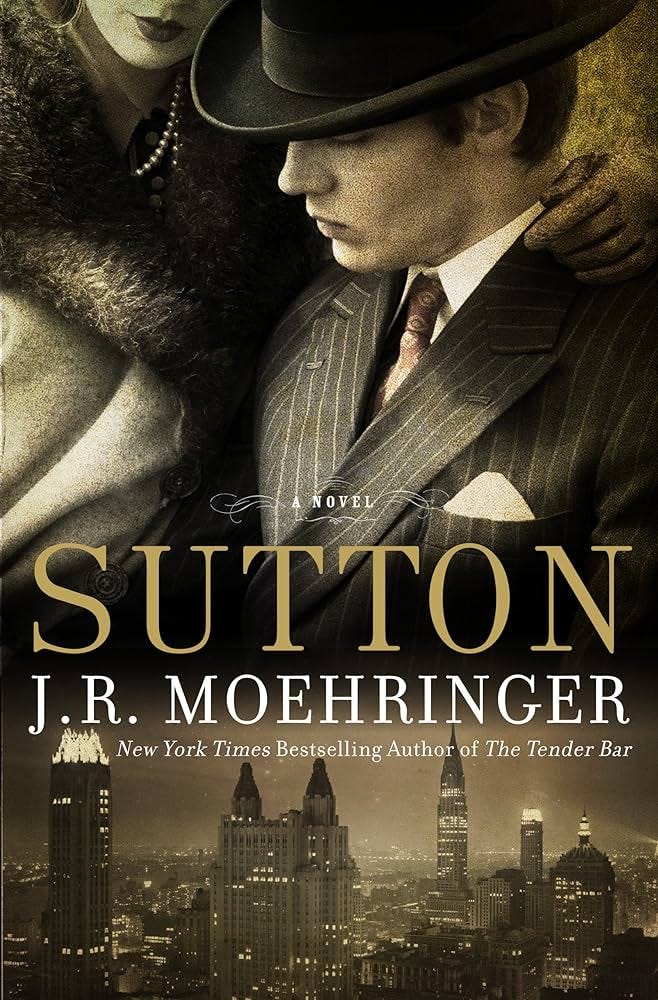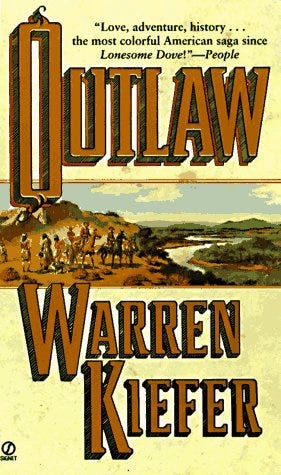THE 2022 MIMSIE AWARDS: "AND THE WINNER IS..."
(NOTE: Every year, in January, I post an essay about all the books I read during the previous year. I call this essay my annual Mimsie Awards presentation. This past January, I was having trouble posting anything on Substack. The problem persisted for months. I created a blog on Medium, just so I could post my 2022 Mimsie Awards essay. Only recently, have I been able to access my Substack blog again, and so I have decided to post the 2022 Mimsie Awards essay here as well. This should have been posted in early January. Better late than never, I suppose…)
I’m always annoyed by people who claim they read four or five books every week. The late literary critic and Yale professor Harold Bloom claimed he could read one thousand pages an hour during his prime.
https://www.theguardian.com/books/booksblog/2009/dec/14/you-can-t-speed-read-literature
I’m surprised anyone making that claim could ever have been taken seriously by serious people. Imagine a food expert bragging that he could eat a filet mignon in under five seconds, or a wine expert boasting of his ability to suck down a bottle of fine wine in just two gulps. No one who truly appreciates food would ever want to gobble down a filet mignon in under five seconds. No one who truly appreciates wine would want to suck down an entire bottle of it in two gulps. And no one who appreciates literature would ever want to consume one thousand pages of it in a single hour.
With that in mind, I am somewhat embarrassed to report that I read 97 books in 2022. That’s roughly two books a week, which isn’t a ridiculously high number, but higher than average for me, so let me explain how it happened. For one thing, I’ve spent much of my life working at some make-work job outside my home in order to keep the bills paid. I spent much of 2019 and 2020 working part-time at an Amazon warehouse (a job I liked, by the way). Alas, in June of 2021, the company eliminated the shift I was working on. They offered me a variety of optional shifts, none of which suited me, so I gave up my job. Prior to 2019, I spent about ten years working part-time at a Sacramento bookstore called the Avid Reader. I liked that job too. After I left Amazon, I expected to find another part-time job fairly quickly. In fact, I applied for dozens of them online. But, apparently, a 64-year-old man with a history of working at mostly entry-level positions isn’t what most employers are looking for these days (go figure!). Thus, 2022 was the first year in a long time during which I held no jobs outside the home. As a result, I got a lot of reading done.
Also increasing the amount of books I read was the fact that I wrote a lot of essays about books, mostly for Quillette, but also for a blog maintained by the editor of Ellery Queen’s Mystery Magazine, and a few other places. This required me to read – or, in some cases, re-read – plenty of books I might otherwise not have. For instance, I spent months reading and writing about American Christmas fiction in the hope that I could produce an essay on the subject (a subject that has long been near and dear to me) that I could sell to Quillette. Alas, the piece eventually grew to nearly 20,000 words, and I knew that Quillette would not want a piece of more than 4,000 words. Not wishing to cut it so drastically, I never bothered submitting it to Quillette. Instead I posted it directly to my Substack page.
In the last century, when I was growing up, Christmastime often brought a spate of new Christmas-themed books from American and British publishers. I used to love reading these books. And I re-read dozens of them in 2022 while researching my essay. But many of these “books” were really just short stories printed between hardback covers. They tended to be very short works that could be read in a single sitting. For example, Frederick Forsyth’s excellent 1975 book The Shepherd runs to 125 pages in its original hardback edition, but it is lavishly illustrated (by the excellent Lou Feck) and probably runs to fewer than 10,000 words. You don’t have to be Harold Bloom to read a book like that in about an hour’s time. Paul Horgan’s The Saintmaker’s Christmas Eve runs to 111 pages, but it too is illustrated, and the print is fairly large, and the pages have plenty of white space. The story probably clocks in at about 5,000 words and can be read in a half hour or so. Likewise, Horgan’s One Red Rose For Christmas contains 96 pages (but no illustrations) and can easily be read in under an hour. Paul Gallico wrote a handful of short Christmas books, all of which I re-read this year for the first time in roughly forty years. Miracle in the Wilderness, my favorite, has 53 pages and can be read in a half hour or so. Gallico’s Snowflake has 64 pages, The Story of Silent Night has 53 pages, and The Snow Goose (his most famous novella but not a Christmas story) has 58 pages and lots of white space. Stubby Pringle’s Christmas, by Jack Schaefer, ran to only 43 pages.
Some of the Christmas books I read were actual novels, but they were nonetheless fairly short ones. Earl Hamner Jr.’s The Homecoming is 144 pages long in paperback. Glendon Swarthout’s The Melodeon is about 175 pages long but it is illustrated and includes blank pages between chapters to pad it out. These books can’t easily be read in an hour, but they can be read in a day or two. And when I was deep into the work I was doing on my Christmas-fiction essay, I was reading as many as five or six of these per week.
I already wrote a great deal about these Christmas books in my Substack essay, so I won’t go into great detail about them here. None of them was quite good enough to win a coveted Mimsie Award, but many of them were quite enjoyable nonetheless. My favorites, in no real order, would probably be the aforementioned The Homecoming, The Melodeon, One Red Rose for Christmas, and Oscar Hijuelos’s Mr. Ives’ Christmas.
When I learned that Paramount Pictures was rebooting the old Fletch film series, with Jon Hamm replacing Chevy Chase in the title role, I decided to write about the series of novels, written by Gregory Mcdonald, that inspired the films.
https://quillette.com/2022/09/23/getting-fletch-wrong/
To that end, I hastily reread the first few books in the series (Fletch; Confess, Fletch; and Fletch’s Fortune) and skimmed through the others (which I did not include in my list of books read in 2022). The Fletch books all seem to run to about 250 pages in length. What’s more, Mcdonald’s trademark was his snappy, wiseacre dialog, so the books are fairly light on exposition. Reading a Fletch novel often feels like reading a screenplay or a stage play. It’s easy to zip right through them.
Early in 2022, I was contacted by an editor at a prestigious publishing house that specializes in books with a conservative slant. He wanted me to write a book called The Conservative Literary Imagination in America Since 1945. Each of the twelve chapters of the book was to be an essay on a writer of American fiction who also happened to be to the right of the political center: Saul Bellow, Walker Percy, Michael Crichton, John P. Marquand, Robert A. Heinlein, James Gould Cozzens, and so forth. This editor felt confident that he could convince his board of directors to commission such a book. We spent several weeks putting together a written book proposal that he would submit to the board when they met in early April. Fairly confident that the book proposal would be approved, I decided to get a jump on the project by re-reading some of my favorite Louis L’Amour novels (L’Amour was a Republican and Ronald Reagan’s favorite novelist). I also decided to read a few books about L’Amour. I had read Hondo, Flint, and Education of a Wandering Man – all by L’Amour – as well as Robert Phillips’s non-fiction book Louis L’Amour: His Life and Trails, before I got word from my editor that his board of directors had rejected our proposal. Both of us were a bit surprised by this, but it wasn’t a great setback. I dropped the project and moved on. But, because of that incident, I ripped through four books fairly quickly, books that I probably wouldn’t have read this year otherwise. Because I thoroughly enjoyed all four books, I have no regrets about the experience.
After reading Hondo, I decided to write a long essay about Maurice Walsh’s 1935 novel (actually more of a collection of stories) called Green Rushes, which is the source of John Ford’s 1952 film The Quiet Man.
https://kevin6ca.substack.com/p/shane-hondo-and-the-quiet-man-how
As a result of that decision, I ended up re-reading Jack Schaefer’s very short (119 pages in paperback) novel Shane, which, like Hondo, appears to have been heavily influenced by Walsh’s work.
Likewise, for an essay on William Kotzwinkle, I re-read much of his work, including his novelization of Steven Spielberg’s E.T., Christmas at Fontaine’s (which I discuss in my Christmas-fiction essay), and his children’s book The Firemen (an illustrated children’s book that can be read in about five minutes). Kotzwinkle doesn’t write long novels, so I read or re-read several of his other books in a fairly short time.
For a not-yet-completed essay on the late YA author Norma Klein, I read a handful of novels, by Klein and others, that deal with teenage sexuality. Most of these books were in the 150- to 200-page range. Likewise, for an essay about Beatrice Sparks, I re-read Go Ask Alice and Jay’s Journal, both of which are short and slight.
https://quillette.com/2022/08/02/go-ask-beatrice/
For an essay on William Goldman, I read, among other things, his children’s book Wigger, which took less than an hour to do.
Not every book I read in 2022 could be devoured in an hour, or even a day or two, but as you can see, for various reasons, I read a lot of very short books. And, thanks to my employment situation, I had more time to read than in any previous year I can recall. In fact, my list should probably include another ten books or so. In the final months of 2022, I spent many hours working on two essays that haven’t appeared yet but which required a lot of reading. April 2023 will bring us the one hundredth anniversary of the birth of John Mortimer, the creator of the Rumpole of the Bailey books as well as many others. I happen to be a huge fan of Rumpole and I am working on an essay about Mortimer’s fictional barrister that I hope to publish at Quillette in April of this year. Naturally, in preparing this essay I have been re-reading many of Mortimer’s Rumpole stories. I haven’t systematically read my way through every Rumpole story beginning the first of them and then proceeding chronologically to the end (Mortimer wrote about seventy of them). I’ve jumped around between my dozen or so Rumpole collections, and I have left at least a story or two from each book unread or, sometimes, just partially read. Likewise, I have been working for months on an essay called “Whatever Happened to Light Verse,” lamenting the fact that America no longer has any hugely popular writers who specialize in light verse the way that Ogden Nash, Phyllis McGinley, Richard Armour, and Dorothy Parker once did. This, naturally, has required me to read my way through the poetical works of each of those four writers as well as many other lesser lights of American light verse. I’ve also been hopscotching my way through a variety of anthologies of light verse, including those edited by W. H. Auden, Kingsley Amis, and Russell Baker. I’ve also read a few nonfiction works about light verse. But, because I didn’t sit down and read my way through any of these books from A-to-Z, I haven’t counted them among the books I completed in 2022. Although I probably spent dozens of hours reading and researching my article on light verse, I undoubtedly left parts of many of these books unread. Were I to include every book I perused in the course of researching my essays on John Mortimer and American Light Verse, the list of books I read in 2022 would probably grow to about 125 total titles.
I’ve never envied people who claim they read 200 or 300 books a year. I don’t want to burn through books at that rate. In fact, often, when I’m enjoying a book, I’ll deliberately slow myself down, putting aside the book for long stretches at a time so that I can fully digest what I have read before going back for more. Good books generally take me longer to read than books that are merely okay. I’d rather read five or ten great books a year than 300 good ones. That being said (a favorite phrase of my former Amazon boss), I didn’t read many books in 2022 that I would characterize as great. I did read plenty of books that were very good, books that I wound up being happy I read even if they didn’t exactly rock my world. And that is fine with me. Before revealing this year’s Mimsie Prize-winners, let me briefly mention some of the best of the non-Mimsie winners.
My late mother was a big fan of the slim gothic romance novels that constituted a major genre of pop fiction back in the 1960s and 1970s. These books are often jokingly referred to as part of the “women running from houses” genre, because their paperback covers almost always featured a troubled young woman scurrying away from a dark and foreboding mansion (in which, usually, only a single window is lighted). I used to tease my mother, good-naturedly, about these books, but I remember enjoying a few of them myself. And when my mother’s memory was stolen away by Alzheimer’s disease during her final decade, I found myself seeking out old gothic romance novels as a way of trying to make contact with the much younger woman she was when she was raising me and my five siblings. One of the best vintage gothics I read in 2022 was Jane Emily, published in 1969 and written by Patricia Clapp. A short, quick read (like most gothics) Jane-Emily tells the story of two young women – one living and one dead – and how their paths cross in dangerous ways in early twentieth-century New England. Predictable and formulaic it was nonetheless totally satisfying because it delivered plenty of creepy atmosphere and a very likeable heroine. It would have made a great installment of the ABC TV Movie of the Week back in the 1970s. Despite being formulaic, Steven Soderbergh’s series of Danny Ocean caper films are watchable because of the style and lightness of touch the director and his stars bring to the material. And the same is true of Jame-Emily. The author’s prose is light but literate and her creepy setting and charming heroine, though unoriginal, come across as welcome old friends rather than tired old clichés.
Hillary Waugh’s 1971 gothic chiller The Shadow Guest is somewhat more original than Jane Emily. (Why do male writers named Waugh so often get stuck with female first names like Evelyn and Hillary?) But the book is still firmly planted in the gothic romance genre of the era. The opening line is a flat-out homage to Daphne DuMaurier’s Rebecca: “Though I am well inland now, when the wind blows stiffly over the moors and the low dark puffs of cumulus roll across the sky, or when the rain beats its heavy, steady siege and the dampness crawls into my clothes with me, I swear I smell the sea and hear the gulls again.” What’s unusual about this is that these are the words of a man, Howard Whelan, who narrates the novel. Most gothic romances are told from the point of view of the female protagonist. Whelan, about forty years old, is an avant-garde architect and the president of Whalen Associates, a successful New York construction company. Long after all his friends have given up on him ever marrying, he meets a struggling young theater actress, Angela Schaeffer, and after a very brief courtship he takes her as his wife. She is about half his age and a penniless orphan, just the kind of woman who usually plays the victim in this type of novel. But Waugh’s novel, as noted, breaks out of the formula’s shackles in several ways. After honeymooning in Spain, the Whelans come back to New York where the wealthy Howard takes an expensive apartment that overlooks the East River and gives Angela permission to decorate it however she wants. All goes well for the first six years of the marriage. Waugh writes: “It was a good life. We had a live-in couple to cook and caretake and a live-out woman to clean. A host of friends and acquaintances, great and near-great, crossed our threshold for business and fun. Angela devoured books on architecture and talked them over with me. She formed her own opinions on design which were, in many cases, more radical than my own. Though she was non-aggressive socially, she was, nevertheless, not afraid to express her views in front of other architects.”
Alas, after six years of happiness in New York, the couple is forced to temporarily relocate to England. Howard’s company has won a large contract to build new housing in a run-down section of London, and the British government expects him to oversee the operation personally. This will require Howard and Angela to live in London for several years. This sounds like fun, but it quickly becomes intolerable for Angela. Howard works such long hours that Angela barely ever sees him. She becomes depressed. She stops eating and spends all day in bed. Eventually Howard realizes that her health is in serious decline and that he has made a huge mistake by coming to England. He finds a psychiatrist who will treat Angela and, for a while, she seems to be improving. Unfortunately, Howard’s own health takes a nosedive and he ends up suffering from a heart attack. At that point, for his own health and Angela’s, Howard decides they must relocate to a small town somewhere outside of London, where he can recover his health but still be close enough to check in on the construction project now and again. Angela finds a lovely old empty house on the coast about a two-hour drive from London. The place is called Heather Cottage, and soon she and Howard are ensconced in it. And this is where their troubles truly begin. If you’ve read any gothic novels, you can probably guess at what they encounter in the country: oddball neighbors, mysterious late night “visitations,” spooky stories about their home’s recent past. But Waugh is great at keeping the tension mounting while also unspooling the mystery element of the plot. I won’t give away any of that mystery except to say that the denouement is a real corker that involves an insanely complicated Rube Goldberg-like device whose elements include a block-and-tackle, a pliable but strong young tree, a noose, seat-belts acquired from an auto wrecking yard, fishing line, and a lot of other random objects. The climax is preposterous and far-fetched, but I don’t mean that as an insult. Visually, the climactic scene is stunning and I’m surprised Hitchcock didn’t make a movie from the book if for no other reason than to film the ending. It’s so zany that it is unintentionally funny. But horror and humor have often gone hand-in-hand, and the gothic romance is a subgenre of the horror novel. I don’t know if my mother ever read The Shadow Guest, but I like to imagine that she did. I think its blend of mystery, romance, and thrills would have brought her a great deal of amusement during the few moments of the day where she didn’t have to take care of her children, her husband, or her house.
Thale’s Folly is a standalone 1999 novel by Dorothy Gilman, who is best known as the author of a series of novels about Mrs. Pollifax, an elderly widow who, late in life, pursues a career in espionage. Thale’s Folly isn’t quite a gothic romance, but it’s close enough. The protagonist, Andrew Thale, is a penniless novelist who now works for a soulless mega-corporation in which his father holds an important position. Andrew’s elderly aunt died years ago and left behind a rambling old house located on dozens of acres in a small town in Massachusetts. Andrew’s father wants him to drive up to the house one weekend and assess its resale value. Andrew’s father is particularly interested in tearing down the old house and converting the acreage into a multi-use modern real-estate development. Andrew arrives at the house and finds that, far from being an uninhabited ruin, it is occupied by a motley group of apparent squatters. These people were friends of Andrew’s aunt and believe she left them the property in her final will, but nobody has been able to find that will, meaning that the legal status of the occupants is shaky at best. Unless they can find the will, Andrew’s father, the aunt’s closest living relative, will be deemed the owner of the property. At first Andrew is annoyed to find squatters on his father’s property. But one of the squatters is a lovely young lady upon whom Andrew develops a crush, and so he decides to put off returning to New York for awhile and ingratiate himself with the squatters. Soon he finds himself actively rooting for them to find the lost will and seize the property rights from his greedy father.
As noted, the book has many elements of a gothic romance – including an actual romance between a penniless young woman and a slightly older man who, though penniless himself, belongs to a wealthy family. Crime and mystery and secrets long hidden in the past also play a part in the tale, as does a creepy old mansion. The story never becomes terrifying in quite the same way as Jane-Emily or The Shadow Guest, but it reminded me quite a bit of Thornyhold, one of Mary Stewart’s best novels. If you like atmospheric, plot-driven tales set in mysterious old houses in oddball rural communities, then Thale’s Folly is for you. The outcome of the book is entirely predictable, but getting there is lots of fun.
Born in Dublin, Ireland, Graham Norton is an extremely annoying presence on British TV chat shows (think: James Corden only worse). I don’t watch British chat shows, but I have occasionally gone to Youtube in order to watch an interview with an actor or director or writer I’m interested in, and am always disappointed when I find that the interview was conducted by Graham Norton, one of those over-caffeinated clowns who try to make a joke out of just about everything. If I had connected that Graham Norton with the author of the novel A Keeper, I would never have purchased the novel in the first place. Fortunately, not until I had the book in my grubby hands and found myself looking at the author’s photo did I realize that the author was THAT Graham Norton. Amazingly, A Keeper is a smart, literate, and moving story that I found almost impossible to put down. It, too, is a sort of gothic romance. Like Thale’s Folly, it begins when the protagonist goes off to investigate a piece of property whose owner has died. In this case the protagonist is Elizabeth Keane, a divorced New Yorker, who must return to her homeland of Ireland now that she has inherited the dilapidated home of her recently deceased mother. Elizabeth wants simply to list the house with an estate agent and then hurry back home to New York. But while going through her mother’s house she comes across a stack of old letters that contain a myriad of secrets about her mother’s (and her own) past. Elizabeth has never really understood how her mother became the type of unmarried woman whose whole life seemed dedicated only to the raising of her lone child in a country openly hostile to unwed mothers. The letters take us back forty years to a time before Elizabeth was born and eventually, through them, Elizabeth learns why her mother, Patricia, never wanted anything to do with her own family. The story is lurid and gothic in the best sense of those words. One online reviewer compared it to Stephen King’s Misery, and it does share some important elements with that pop-fiction classic. I was particularly amused by this comment, posted on Goodreads.com: “This is the 2nd novel I have read by Graham Norton and once again I am so impressed with his writing. Don't be put off by his stage persona and read this book as you would any other author. This is a fabulous little book and I read it from start to finish in one sitting wanting to know more.” An impressive number of British TV personalities are also gifted novelists, including the likes of Alan Titchmarsh and Prue Leith, both of whom are popular in my own household (my wife loves his gardening shows and her baking program), as well as Richard Osman, whose Thursday Murder Club mysteries are a hit on both sides of the Atlantic.
A Keeper had a few stumbles here and there. As in most pop-fictions, some of its twists and turns seemed ludicrous. And the conclusion seemed a bit too protracted for my taste. But it still managed to outclass many of the bestselling thrillers I’ve read recently, including many that were written by even more famous authors than Mr. Norton. I still don’t have any desire to watch his chat show appearances, but I’m eager to read more of his books.
Another very creepy chiller I read in 2022 was Naomi’s Room, by Jonathan Aycliffe, a pseudonym used by Irish writer Denis M. MacEoin (under the penname Daniel Easterman, he has written thrillers such as Brotherhood of the Tomb and The Ninth Buddha). Under the Aycliffe pseudonym, the author produced nine novel-length ghost stories between 1991 and 2004. Naomi’s Room was the first of these. It’s a fairly short novel, just over 200 pages in paperback, but it is also a very powerful one. Most ghost stories end relatively happily, with the ghost accomplishing some purpose that allows it to cross over completely to “the other side” (whatever that may be). The more malevolent ghost stories often end with the ghost being defeated by the living humans that he (or she) is haunting (this is the case with Jane-Emily). But there is nothing happy about Naomi’s Room. It is a coal-dark tale that starts out bleak, grows darker with every chapter, and ends in a place of complete desolation. It begins in the winter of 1970. Youngish British scholar Charles Hillenbrand takes his four-year-old daughter Naomi out on Christmas Eve for some last-minute shopping. In a crowded department store, he takes his eyes off Naomi for a few seconds in order to make a purchase and, when he turns back to her, she is gone. Naturally, he panics. He alerts the store’s security chief. They make an aggressive effort to find the girl. The police are called in. But Naomi is never found – not alive, that is. The loss of their daughter spells doom for the marriage of Charles and his wife Laura. Naomi’s body is eventually found, in a church where it was badly mutilated and then hidden away. But for Charles, this is only the beginning of the horror that will consume the rest of his life. I won’t give away any more plot details (the ones I’ve disclosed occupy only the first twenty or so pages of the book) because I don’t want to spoil the surprises for you. Look up the book on Goodreads.com and you’ll find plenty of people testifying that this is the scariest or creepiest or most bleak book they have ever read. Those testimonies are easy to believe. I’m not generally a fan of hopelessly dark fiction but, because it is so well-written and smart and compelling, I found Naomi’s Room unputdownable. Yeah, it’s bleak, but I didn’t regret reading it. In fact, the book is rather enjoyable once you realize that it can’t ever possibly resolve itself in anything resembling a happy ending. When the happens, it is as though you are riding on a really great roller coaster but you can see that the final incline has broken away near its summit. At that point, you know the ride is going to end disastrously but that you will nonetheless experience some titanic thrills before you get there.
Another very good book I read in 2020 is a 1997 thriller called The Genesis Code, written by John Case (a pseudonym for husband-and-wife writing team Jim and Carolyn Hougan). This novel bears a lot of similarities to Dan Brown’s mega-bestseller (80 million copies worldwide) The Da Vinci Code, but it was published six years earlier (the similarity of the titles and other details suggests that Brown was probably aware of Case’s book while writing his own). I’m not one of those literary snobs who look down their noses at The Da Vinci Code. It wasn’t the equal of The Godfather or Rosemary’s Baby, but it was an impressive piece of popular fiction. But The Genesis Code is actually better – smarter, better written, more complex. The only thing it lacks is the propulsive pace of Dan Brown’s thriller. For most of its 450 pages it is sort of a slow-burner, erupting into an all-out bonfire only in its final act. Nonetheless, it is wickedly plotted and wholly entertaining. It involves a scientist who has found some ancient DNA that he believes came from the historic Jesus. The scientist runs a fertility clinic for women unable to conceive via conventional methods. Secretly, he has impregnated a number of women over several years using the DNA of an ancient human he believes to be Jesus Christ. In some ways, this is reminiscent of what Ira Levin did in The Boys From Brazil, which concerns the DNA of Hitler rather than Christ, but follows a similar globe-hopping story arc. In The Genesis Code, someone is crisscrossing the globe, murdering young boys who were conceived with the DNA of Christ, and private detective Joe Lassiter wants to know why (his little nephew was one of the murdered boys, though Lassiter, at first, is unaware of how the child was conceived). The Genesis Code was written near the end of the twentieth century and would probably be sadly diminished if it were updated and set in the twenty-first century. Case was writing just before the advent of smart phones changed the world. The internet existed in 1997 but it was nothing like it is today. As a result, Joe Lassiter spends a lot of time flying back and forth from places like Rome and Chicago and Washington, D.C., and Prague. Nowadays, he could do almost all of his research online. All of his interrogations could be conducted via texts or emails or Zoom calls. If you are a fan of Michael Crichton and have read your way through all of his techno-thrillers, do yourself a favor and read The Genesis Code. It reads like a collaboration between Crichton and Levin with a bit of Dan Brown thrown in for good measure. And that is some pretty solid pop-fiction DNA. In fact, if The Boys From Brazil and Jurassic Park had a baby, it would probably look a lot more like The Genesis Code than like The Da Vinci Code.
In a similar vein we have The Girl With the Silver Eyes, written by Willo Davis Roberts. In past installments of the Mimsie Award essay series I have raved about novels such as Destiny’s Women, A Long Time to Hate, and Days of Valor that Willo Davis Roberts wrote for an adult audience. But Davis was best known as a writer of excellent novels for young adults and, in 2022, I finally read the best known of these. It is the tale of a nine-year-old girl named Katie who has silver eyes and possesses various supernatural powers (telekinesis, telepathy, etc.). Katie doesn’t know why she possesses these powers and often wishes that she didn’t possess them at all. They often prove to be more of a burden than a blessing. This novel was first published in 1980 and feels very much as if it could have been one of the main sources of the TV series Stranger Things. Katie very much resembles Eleven, the young girl played by Millie Bobby Brown in Stranger Things. She spends much of the book trying to track down other children who possess powers similar to her own in the hope that, together, they can figure out why it is that they are so different from other kids their age. The novel was published just six years after Stephen King’s Carrie, and may well have been partially inspired by it, although it isn’t nearly as dark. This isn’t my favorite of the Willo Davis Roberts novels I have read (that would be Destiny’s Women) but it is a good short novel that can easily be read in a few days and yet leaves a lasting impression.
I don’t read a lot of nonfiction books and I rarely read books in the year in which they are published, but this year I bucked that trend. This year brought us the publication of two fascinating books about airline stewardesses. Fly Girl is novelist Ann Hood’s memoir of the ten years or so she spent working as an airline stewardess in the 1970s and 1980s. I have long had an interest in airplane travel. I published a long essay in Quillette in 2021 about the Golden Age of airplane fiction. A lot of novels have been written by and about airline pilots, but not enough have been written by stewardesses. This is understandable because, for many years, the careers of stewardesses were, by design, relatively short. The airlines usually fired women if they got married, became pregnant, gained weight, or surpassed the age of 35. Thus, few women could write about a long career as a stewardess the way that, say, Ernest K. Gann would write about men enjoying long careers as airline pilots. Hood’s novel is very warm and personal and includes all kinds of fascinating anecdotes about the celebrities she encountered on airplanes, what happens when a passenger dies in mid-flight, all the romantic opportunities that being a stewardess offered, as well as all the unwanted attention it brought from men who were encouraged to believe (often by the airlines’ own advertising) that stewardesses were mainly interested in finding a man to settle down with. Although she is occasionally critical of the airline industry and the way it treated stewardesses, hers is a fairly upbeat and nostalgic look at the life of a mid-twentieth-century American stewardess.
Much more critical is Nell McShane Wulfhart’s The Great Stewardess Rebellion: How Women Launched a Workplace Revolution at 30,000 feet. Hood’s book gave us a close up view of the life of a stewardess from one young woman who grew up in a middle-class Catholic family in Rhode Island and eventually found herself working as a stew. Wulfhart’s book pulls back and gives us a broad overview of the entire field of American air-hostessing, telling us just how much sexual harassment the stews had to endure in the workplace, how much they were exploited and abused not only by their own customers and employers but also by the very labor unions that supposedly existed to protect them from that kind of abuse. It is a fascinating and often depressing story but it also provides the reader with quite a few plucky heroines to admire. Curiously The Great Stewardess Rebellion and Fly Girl were published within a few days of each other in the Spring of 2022. I enjoyed Hood’s book more simply because it read a lot like a first-person novel. Wulfhart’s book is a work of long-form journalism and a very good one. I just happen to prefer novels to journalism. But if I were in charge of handing out Pulitzer Prizes for nonfiction rather than Mimsie Awards, I’d be incline to bestow an award upon Wulfhart’s book. It was a true eye-opener.
One of the most interesting books I read in 2022 was Unmask Alice, by Rick Emerson. I’ll have more to say about it later, but it was, in part, an expose of the kind of pseudo-scientific hogwash that filled a lot of “nonfiction” books published in the mid- to late twentieth century. Books like Go Ask Alice and Sybil purported to be true accounts of contemporary Americans suffering various psychoses that ultimately claimed their sanity or, in some cases, their lives. These bogus nonfiction books also inspired a lot of fiction about people suffering from mental health problems such as multiple-personality syndrome. In truth such syndromes are extremely rare, but judging from the pop fiction and cinema of the era, you’d have thought that things such as amnesia, multiple personalities, and the sexual exploitation of children by satanists were as common as the flu. One of the few good novels to emerge from this trend was The Fifth Sally, written by Daniel Keyes, best known as the author of the cult-classic novel Flowers for Algernon. Keyes studied psychology in college with an eye towards becoming a mental health professional. But the runaway success of his short-story Flowers For Algernon (later expanded, poorly, into a novel) convinced him to make a career as a professional writer instead. Nonetheless much of his work deals with psychological issues. He also wrote a bestselling nonfiction work about a famous case of multiple-personality syndrome called The Minds of Billy Mulligan. The Fifth Sally, published in 1980, isn’t a masterpiece, but it is an interesting and well-researched novel about a New York City waitress who suffers from MPD largely as a result of abuse she received as a child. Now, as a grown-up woman, she has five separate personalities, which makes her life, to say the least, chaotic. Keyes’s novel isn’t exploitative. Sally doesn’t turn into a monster and go on a murderous rampage (though she comes close). The book probably would have been a lot more commercially successful had Keyes just tweaked it a bit and turned it into another The Eyes of Laura Mars or The Three Faces of Eve or Audrey Rose. Instead he seems primarily interested in exploring how multiple personalities develop and how those suffering from MPD can be cured. Despite being a rather restrained look at MPD, the book is nonetheless fairly compelling. I gobbled it up in two or three days. Some of the psychology seemed a bit simplistic and overly convenient in terms of the plot. But the main character is highly sympathetic and her plight is engrossing. Even as restrained as it is, the book probably should have been a much bigger seller. Perhaps if it had been published in the early 1970s, when a lot of whackadoodle pseudo-psychological ideas were being popularized (biorhythms, I’m O.K. – You’re O.K., Your Erroneous Zones, EST, Carlos Castaneda, past-life regression, etc.), The Fifth Sally would have become a cultural juggernaut like Sybil. Not quite good enough for a Mimsie, the book was nonetheless smart and entertaining and I’m glad I read it. Still, I couldn’t help fantasizing wistfully about the kind of all-out pulp-fiction blockbuster it could have been in the hands of someone less concerned with psychological truth and scientific integrity. Stephen King could have turned this same material into an absolute shit-storm of thrills and chills (think: Firestarter meets Carrie meets Misery).
About ten years ago, I read a Young Adult novel called So Much To Tell You, by Australian writer John Marsden. I recall really enjoying the book but, as the years went by, I found that I could no longer recall what it was about. All I could remember was that it was told in diary entries, and I love epistolary novels and others that employ similar storytelling devices. So, at some point in 2022, I decided to re-read the book. It was short and I figured I could read it in a day or two. I knew that I hadn’t given my copy of the book away, because I rarely give away any book I love that much. Plus, I don’t know anyone who enjoys reading YA as much as I do, at least not anyone in my age group (60-plus). I spent hours one day trying to find the book, but it was nowhere to be found. Frustrated, I decided to put off looking for it. I had plenty of other good books to read, and I felt confident that, if I just kept the book’s title in mind, I’d eventually come across it on my shelves. But a month or so went by and I still hadn’t come across it. Annoyed by this, I went online and bought a cheap paperback copy on Amazon (my first copy was a nice hardback). As is often the case, shortly after my new copy arrived, I found the old one. The reason I had failed to find it, I think, is because the book was shorter than I recalled and had a slimmer spine. Plus the spine is gray with off-white print and the title doesn’t stand out at all. From a distance of a couple of feet it looks like it might be a blank notebook. Anywho, I sat down to re-read this masterpiece of YA literature and discovered that…it wasn’t quite as awesome as I recalled. This was the author’s first book and the writing could be a bit clumsy at times (not really a problem, however, because it was supposed to be the diary entries of a psychologically damaged 14-year-old girl). Oh, I still think this is a fine piece of YA literature and I’m glad I re-read it. I was hoping to award it a Mimsie this year, but it missed the mark just slightly. Nonetheless, I highly recommend it. It’s even shorter than I recall (115 pages) and can easily be gobbled up in a sitting or two.
Another book that just missed the mark was Missing, Presumed, by Susie Steiner (pictured above). This is a very good British police procedural. I wrote about it in a Quillette essay called In Memoriam, which paid tribute to some of the pop-fiction writers who died in 2022. Sadly, Susie Steiner, though she was only 51, died in July of 2022 of a brain tumor. She left behind a husband and two sons. Her personal story is detailed in my Quillette essay and I encourage you to look it up. Because Steiner’s personal story was so moving and tragic I wanted to award her a Mimsie. But, if I’m being honest, though very good, Missing, Presumed was not great. It was the first in a series of three books about a British police inspector named Manon Bradshaw. I definitely want to read the others. Perhaps one of them will end up on some future Mimsie list.
And now, without further ado, let us pass out a few Mimsie Awards.
John R. Feegel, who died in 2003, at the age of 70, had an impressive resume. He earned a law degree, a medical degree, and a masters in public health. In the 1970s he served as the medical examiner (coroner) for Hillsborough County, Florida, home of the city of Tampa. He also served for a while as an associate medical examiner in Atlanta, Georgia, where he testified in the trial of notorious serial killer Wayne B. Williams. Feegel’s 1976 novel, Autopsy, written in his spare time, won the Mystery Writers of America’s Edgar Allan Poe Award for Best First Novel. His interests included ancient Mayan culture, and he taught himself how to read the Mayan language. His obituary makes him sound like a cross between Quincy M.E. and Indiana Jones.
But neither of those fictional characters was also an award-winning novelist. He wrote a textbook called Legal Aspects of Laboratory Medicine, and a total of seven novels. In 2022 I read his second novel, Malpractice, published in 1981 but set in the late 1970s. The novel makes excellent use of the author’s knowledge of both medicine and law, as well as his familiarity with small-town Southern culture. The reluctant hero of the novel is a young and inexperienced lawyer named Yancey Marshall, who practices in the town of Pine Hill, Georgia. His law office is just a cheap rented room above a drug store. One day he is visited by an impoverished Black woman named Eula Pitts. Her sixteen-year-old son Franklin Delano Pitts, an outstanding high school athlete, died recently during an appendectomy performed at the local hospital by a highly respected physician named Joe Thatcher. Ms. Pitts believes that Dr. Thatcher (a pillar of the white community) screwed up during surgery and that the hospital and the insurance company are covering it up. She wants Yancey Marshall to look into the matter. Marshall, for a variety of reasons (laziness, fear of stepping on the toes of powerful people, the knowledge that Ms. Pitts won’t be able to pay him much) tries to dissuade Ms. Pitts from pursuing the matter, but she won’t take no for an answer and he eventually agrees to make a few casual inquiries. Fairly quickly Marshall uncovers a lot of dirty little secrets about his town. He learns, for instance, that Dr. Thatcher is a raging alcoholic and wife beater who often shows up drunk in the operating room. He learns that the small medical community is a tightly knit group of white people who tend to cover up each other’s mistakes. He also learns (although it isn’t really news to him) just how thoroughly racist the community is. He discovers, for instance, that when a Black teenage girl had a baby out of wedlock, her white doctor, after delivering the child, tied the mother’s tubes without her consent or knowledge, so that she could have no more children. Just a bit of freelance eugenics practiced automatically on women considered too Black and stupid to be bringing a lot of children into the world. Marshall is told over and over again that he is an idiot for getting so worked up over the death of a Black kid, although the word used is generally much harsher than “Black.” There’s a bit of Atticus Finch in Yancey Marshall, although, thankfully, just a little bit. Marshall isn’t quite as noble and upstanding as Atticus. He’s a playboy and, by the standards of our time, a bit of a sexist. Like Atticus, and unlike most of his white neighbors, Marshall has managed not to become a raging racist, although by today’s woke standards he might be found a bit condescending in his interactions with Black people.
The book has a lot in common with To Kill a Mockingbird. Both are set in the rural South. Both feature white lawyers fighting for the rights of Black people. Both are crime novels. Harper Lee was a better stylist than Feegel, but his prose, if not dazzling, is nonetheless rock solid. For most of its length, Malpractice plays out like an intelligent but fairly reserved police procedural, although the character doing the investigating and gathering of evidence is a lawyer rather than a cop. I expected that it would end with a dramatic court case and a hard-won but fairly predictable triumph in court for Yancey Marshall and his client, Ms. Pitt. In its final act, however, Feegel sloughs off his restraint and goes for the all-out twists and turns and truly shocking developments of good pulp fiction. It’s a corker of an ending, so busy and gruesome that it seems to come from another book entirely. And yet…I loved it. Feegel sets us up to expect one type of ending and then smacks us in the face with something entirely different. This isn’t a literary masterpiece, but it’s probably one of the sharpest and smartest crime novels of the 1980s. Pity that almost nobody knows about it. It reminded me not of big spectacular books like The Silence of the Lambs or Gone Girl but of some of the better crime novels that have been mentioned in recent Mimsie Award essays, books such as Norman Zollinger’s The Road to Santa Fe (published posthumously in 2002) and Robert J. Serling’s McDermott’s Sky (1977), both of which are intelligent but fairly staid mysteries which turn quite pulpy in the final act. In some ways, you could say that Feegel’s timing was a bit off. The late 1980s saw the birth of the contemporary craze for legal thrillers, which began with the publication, in 1987, of Scott Turow’s Presumed Innocent, which became a huge bestseller. In 1991, when John Grisham’s The Firm also became a massive bestseller, the genre was pretty much fully defined and hasn’t diminished in popularity yet. Had Feegel published Malpractice in the late 1980s or early 1990s it might have been swept up in the mania for legal-thrillers that was a hallmark of American pop-fiction at the time. In fact, Feegel’s novel bears a strong resemblance to Grisham’s first novel, A Time To Kill, which was published by a small press in 1989 but didn’t become a bestseller until after The Firm made Grisham a household name. Both Malpractice and A Time To Kill deal with white lawyers in the Deep South defending the rights of Black clients. Racism is the primary driver of the plots of both novels. Malpractice never got the bestsellerdom it probably deserved, but today I have corrected that oversight by bestowing upon it the first Mimsie Award of 2022. I know that John R. Feegel would be proud of such a distinction.
Though I have been out of touch with her for twenty years or more, Karen Joy Fowler is an old friend of mine. For about a decade we belonged to the same Davis, California, weekly writers group. I have long considered her one of the best prose writers of our era, although I haven’t always been bowled over by her plots. When her novel We Are All Completely Beside Ourselves was published in 2013 I rushed out and purchased a copy, eager to immerse myself in its writing which I knew would be spectacular. Alas, the story deals with an incredibly heartbreaking case of animal abuse (and, not incidentally, child psychological abuse) and eventually I just found it too overwhelmingly sad to finish. Thus I put it aside. In 2022, when my friend Cy (who was a member of the same Davis, CA, writing group) mentioned the novel in an offhand comment, I sheepishly admitted I’d never finished reading it. He told me I’d made a big mistake. He said I needed to sac up and power through, that the ending of the novel was transcendent. Of course, nine years had passed, and I no longer remembered much of what I’d read before, so I had to go back to the beginning and read it all the way through. I found the book just as difficult to read as before, but I forced myself to finish it and, in the end, I must concede, that Cy was correct. The ending was indeed transcendent. What’s more, it slightly mitigated some of the sadness that preceded it. Ford Maddox Ford’s novel The Good Soldier famously begins with the line: “This is the saddest story I have ever heard.” For me, We Are All Completely Beside Ourselves fits that bill. It’s so moving and beautifully written that it probably should have topped this list of Mimsie-Award winners. But its overwhelming sadness has repressed my enthusiasm for it, somewhat. One hundred years from now, it will probably be the most highly regarded of all the books on this year’s list, while the others may be long forgotten (many already are). The novel’s effectiveness depends a great deal upon the various surprising revelations Fowler doles out along the way, so I shan’t attempt to synopsize it. Suffice it to say, you’ll need a full box of Kleenex nearby if you plan to read it.
Last year (I believe) I awarded a joint Mimsie to Frederick Forsyth’s two short-story collections No Comebacks (1982) and The Veteran (2001). This year I am awarding another to The Deceiver (1991), a collection of four novellas. It’s an odd book. It started life as a British TV series called Frederick Forsyth Presents. The series told of the exploits of a British Cold War spymaster named Sam McCready. Later, Forsyth novelized four of the installments of that series in much the same way that John Mortimer novelized the episodes of his Rumpole of the Bailey TV series. The result was The Deceiver. The four long tales in The Deceiver are connected by a framing device that, in my opinion, wasn’t really necessary. Here’s the gimmick: The Berlin Wall has fallen, the Soviet Union has collapsed, and the Cold War has ended. The politicians who run Britain’s Special Intelligence Services want to cut funding for MI6 as part of the so-called “peace dividend” that many expected the post-Cold War era to provide (the peace dividend was the idea that, with the Soviet Union gone, Britain and the U.S. wouldn’t have to spend so much money spying on Russia and preparing for war with it – which turned out to not be true). In any case, these British politicians want to streamline the country’s intelligence services and get rid of old Cold Warriors like Sam McCready. Fortunately, enough professionals in the intelligence field remember just how gifted a spymaster McCready was during the heyday of the Cold War and they have decided to speak up for him at the secret hearing determining his fate. That’s the framing story that ties the tales together. Each separate adventure is recounted by a different intelligence officer who admires McCready’s service to his country. This framing stuff can be skipped if you are so inclined, although it takes up very little of the book. As to the four novellas that make up the bulk of the book, there isn’t a weak link in the bunch. I enjoyed the first one so much that I was reluctant to go on. Often, authors and publishers put the best story in a collection first in order, hoping it will be strong enough to encourage the reader to buy the whole book. I was concerned that the other stories might be a letdown. But to be honest, each story was pretty much exactly as good as all the others (I know, sounds impossible, but it’s true). I really couldn’t pick a favorite from among the four tales. These stories are geographically diverse, set in places such as Moscow, East Germany, the Caribbean, and elsewhere. I wouldn’t be surprised to hear that the final story in the book, “A Little Bit of Sunshine,” was an inspiration to Robert Thorogood when he was creating the TV series Death in Paradise, which he pitched to the BBC back in 2010 as a tale of a “copper in the Caribbean,” essentially a show about a fish (a stuffy British police inspector) out of water (forced to travel to a British territory in the Caribbean and serve on the police force there). “A Little Bit of Sunshine” employs roughly the same device. After the British governor of the tiny (and fictional) Caribbean island of Sunshine is murdered, Scotland Yard sends a gruff British copper to the island to investigate the murder. Like Richard Pool in the original incarnation of Death In Paradise, Desmond Hannah is a British cop with absolutely no interest in enjoying the sun and fun of the Caribbean. He wants nothing to do with the assignment, but he is in no position to turn it down. Thus, he reluctantly travels to Sunshine, but remains totally uncharmed by its beaches, its fine weather, and its colorful natives. Scotland Yard believes the murder is probably just a local matter. But Sam McCready, who has been in Miami consulting with the CIA on various aspects of spycraft, reads about the murder of Sunshine’s governor and immediately becomes suspicious that it may have international implications. He has no authority to investigate the murder but he nonetheless travels to Sunshine and injects himself into the investigation, much to the annoyance of Desmond Hannah.
Each of the novellas in The Deceiver could easily have been padded out a bit and made into a very good standalone novel. And I’m kind of surprised that Forsyth didn’t do this. If he has a weakness as a writer, it is his tendency to throw too much research into his novels, weighing them down a bit with excess details which, though they add authenticity to the narrative, also often slow it down. The Deceiver is every bit as good as the best of Forsyth’s books, even The Day of the Jackal and The Odessa File. In fact, along with the two abovementioned story collections, I think this might be one of my three favorite Forsyth books. I’d love to see an omnibus edition of all his shorter fiction made up of the contents of those three books and his Christmas novella The Shepherd. I wish Easton Press would put something like that together between leather covers and provide a special edition signed by the author. I’d be happy to pay a high price for it. Sam McCready, the main character of The Deceiver, is reminiscent in some ways of John Le Carre’s George Smiley character, Mick Herron’s Jackson Lamb character, and even a bit of Lt. Columbo. He deserves to be more famous. Perhaps some streaming service will do us all a favor and remake the stories that inspired this collection.
The Professor’s Daughter, by Piers Paul Read, is one of the odder and most obscure books on this year’s awards list. I almost left it off. I read it early in the year while researching an essay on the portrayal of abortion in American novels that were written before Roe v. Wade. I was writing this essay in anticipation of the Supreme Court’s Dobbs decision, which was widely expected to overturn Roe v. Wade (and did). This book was written by a conservative British Catholic, but it is set in America and its characters are all Americans. According to Read’s Wikipedia entry, The Professor’s Daughter is “among his most popular works.” That hardly seems likely. It’s out of print in the U.S. and has a grand total of two reader reviews at Amazon.com. In fact, Amazon lists three other novels with the same title, all of which have more reviews and sales than Read’s. At Goodreads.com it doesn’t appear to have any real reviews. The site shows a couple of reviews that are written in Russian, but they are so slight they are probably the work of bots. It also has two reviews written in English, but they are each one sentence long and contain a combined total of sixteen words. Thus, the book is about as obscure as it could get in the U.S. This isn’t all that surprising. It was published in 1971 and concerns itself with elite east-coast Americans. Along with Erich Segal’s Love Story and John Jay Osborne’s The Paper Chase, it was part of a mini-genre of books about young people who are connected in some way with Harvard University. This one is about nineteen-year-old Louisa Rutledge, the daughter of a Harvard professor and a member of a very distinguished American family. In the book’s opening pages, set in 1967, Louisa has an unsatisfactory sexual hookup with a man twice her age and then attempts suicide by jumping out the hotel room window. Fortunately, though she is injured, she is not killed. Her parents are called. The rest of the book will deal with the fallout from this incident. Her mother will be exposed as an adulterer. Her father will eventually engage in something even worse. The whole point of the novel seems to be exposing the rot at the heart of upper-crust liberal America. The Rutledges are members of the same circle of east-coast elites that produced John F. Kennedy. His election to the presidency was the highlight of their collective lives, but it has all been downhill since his murder. Though Read’s portrait of these people isn’t exactly sympathetic, it doesn’t seem entirely critical either. The book doesn’t strike me as especially ideological, although its cast of liberals and anarchists are all portrayed as seriously flawed individuals. In a way it reminded me of the film Guess Who’s Coming To Dinner, because both stories deal with upper-class liberal parents trying to navigate a world that their daughter has suddenly made fraught with obstacles and booby traps. It may also have been partially inspired by Who’s Afraid of Virginia Woolf, in that it deals with east-coast academics trying to navigate the widening generation gap of the 1960s. This book begins with a shocking event (Louisa’s leap from the hotel window) and ends with some even more shocking events, but in between it feels almost like a stage play. It is very talky and intelligent, and the characters are interesting even if they sometimes come across as stereotypes. I don’t have much more to say about it. I remember being highly impressed by it while reading it. I finished it thinking that it was sure to get a Mimsie. But by the end of the year, it had somewhat faded from my memory. But that’s probably just because I’m old and my memory isn’t that good. I think too often the Mimsie Awards are weighted in favor of books that I read towards the end of the year and are still fresh in my memory (in the same way that the Oscars tend to be weighted in favor of films that were released late in the previous year and thus are still fresh in voters’ minds). Thus, I am trying to offset that tendency by giving an award to The Professor’s Daughter. At the time of the book’s publication, the New York Times called it “One of the most shocking and brilliant novels of our time.” That assessment hasn’t held up. But this book is much better than Love Story and various other pop fictions set in the same milieu and same time. Something about the characters and the difficulties they had communicating with one another endeared the novel to me. YMMV.
I had never heard of Robert Goolrick until I read his obituary in the New York Times on May 20 of 2022. I wrote extensively about Goolrick and his work in this essay for Substack:
https://kevin6ca.substack.com/p/book-browsing-in-the-obituaries
I also wrote about him in this year-end essay for Quillette:
https://quillette.com/2022/12/20/in-memoriam-farewell-to-the-pop-fiction-giants-we-lost-in-2020/
I won’t rehash what I said. I’ll just note that I read some very exciting gothic thrillers in 2022 but only Goolrick’s A Reliable Wife was good enough to earn a Mimsie. His novel The Dying of the Light was also a gothic thriller, and a good one. I highly recommend them both.
I am a longtime fan of author William Kotzwinkle and in 2022 I decided to write a retrospective of his long and astonishing career, during which he has produced some of the most unusual novels of the past fifty years or so. Kotzwinkle is now 84 years old, I think (the Wikipedia says he was born in 1943 and encyclopedia.com says 1938; I believe the latter is correct). His output includes all kinds of oddities such as The Fan Man (1974), Doctor Rat (1976 and a winner of the World Fantasy Award), Fata Morgana (1977), E.T. The Extraterrestrial (a novelization of the Spielberg film and the bestselling novel in America for the year 1982), Jack in the Box (1980 and the source of the 1990 film Book of Love), The Bear Went Over the Mountain (1996), and many others. He has dabbled in just about every imaginable pop-fiction genre and has written a few books that are impossible to shoehorn into any particular genre. In preparation for my article on him, I began re-reading some of his books. I also read his most recent novel, a book I ignored when it was published in 2021 because its title, Felonious Monk, struck me as groaningly unfunny. I’m glad I didn’t let this one slip by me. Like most Kotzwinkle books it bears little resemblance to any other Kotzwinkle book, except that it is funny and well written. Believe it or not, what it resembles most is one of Lee Child’s Jack Reacher novels. The main character is Tommy Martini, a young man whose grandfather was a prominent Mafia don. In college, Tommy was a promising wrestler with a national ranking. But, while working a part-time job as a bouncer at a dive bar, he accidentally (or not) killed an unruly patron. Thanks to his well-connected grandfather, Tommy escapes criminal prosecution, but his family decides it will be best if Tommy lies low for a while. Tommy’s Uncle, a crooked Catholic priest known as Father Vittorio, arranges for Tommy to spend time at a Catholic monastery in Mexico. As the novel opens, Tommy has been in the monastery for five years when he learns that Uncle Vittorio is on his deathbed. So Tommy leaves the monastery and travels to the small New Agey Arizona town where Vittorio lies near death. When Vittorio dies, Tommy inherits the bulk of the crooked priest’s estate. As a result, he winds up suspected of having come into possession of several million dollars that Vittorio has stolen from some extremely dangerous mobsters. Tommy swore off worldly possessions when he entered the monastery and, as a result, he arrived in Arizona, as Reacher would, owning little more than the clothes on his back. But, like Reacher, he is big, powerful, smart, and not the least bit intimidated by evildoers. He is also highly attractive to women and, having sworn off sex for the last five years, eager to make up for lost time.
Felonious Monk isn’t a spoof of the action/adventure novel. Though it pokes a bit of fun here and there, the book is a genuinely exciting crime tale full of sex, violence, and death. Most of the comedy comes from the phony-baloney New Age practices that nearly everyone Tommy meets in Arizona seems to either believe in or cynically traffic in. Had the book been written by Cormac McCarthy or John Irving, it would probably have been hailed as a late masterpiece from a living American literary legend. As it happened, the book was barely even reviewed. Fortunately, that outrage has now been offset by the awarding of a Mimsie. Kotzwinkle has a sequel – Dirty Martini – coming out in February of 2023. I can’t wait to read it.
I can’t for the life of me remember how I heard about James Kestrel’s novel Five Decembers, published in October of 2021. All I know is that, sometime in mid 2022, I ordered it online, began reading it as soon as it arrived, and upon finishing the novel, I went on Twitter and, as I was randomly scrolling through my feed, I discovered a notice that, the previous evening, Five Decembers had been awarded the Edgar Allan Poe Award for Best Novel of 2021 by the Mystery Writers of America. Thus, even as I was reading my way to the finish of the novel, Kestrel was probably in NYC accepting his award for it. I can’t say for certain if the book deserved the honor because I’ve read only one of the other nominees (No One Will Miss Her by Kat Rosenfield, a very good book but not as good as Kestrel’s), but I’ve read very few crime novels as gripping and intelligent as Five Decembers. Ever since reading James Clavell’s Shogun as a teenager, I’ve had a Jones for novels about the adventures of Westerners in the Orient. And this book more than scratched that itch. In fact, Kestrel’s novel scratched a lot of itches. It is a crime noir tale, a bit of a love story, a mystery, a war story, a historical novel, and an East-meets-West tale. It is also incredibly gripping and thrilling. The story begins in December of 1941, an infamous month in American history. But Kestrel is less interested in the bombing of Pearl Harbor than he is in the murder of two young lovers who were attending the University of Hawaii. The murders are being investigated by the book’s protagonist, Honolulu Police Detective Joe McGrady. When he learns that the perpetrator may have absconded to Hong Kong after the killings, McGrady gets permission to go after him. Alas, while he is in Hong Kong, the Japanese not only bomb Pearl Harbor but also take over Hong Kong. As an American, and a potential enemy combatant, Joe is taken prisoner by the Japanese and put on a prison ship bound for Japan, where he expects to be tortured and possibly killed. In fact, what awaits him in Japan is far more dramatic and thrilling than he can imagine.
The novel, as the title suggests, unspools over five consecutive Decembers. During those five years, Joe’s life is upended in just about every way imaginable, but, amazingly, he never gives up on his determination to bring to justice the man responsible for killing two young lovers back in Hawaii in the days before the bombing of Pearl Harbor. As this is a mystery novel, I can’t say much more without spoiling some of Kestrel’s many surprises. I may have given away a few plot twists here, but trust me, you’ll will find dozens of others that I haven’t even touched upon. This was not only the best crime novel I read in 2022, it is one of the best crime novels I have ever read. Absolutely brilliant!
Nicholas Evans’s first novel, The Horse Whisperer, was published in 1995, when the author was 45. The Horse Whisperer was more than just the tenth bestselling novel of 1995; it was a phenomenon. In Making the List, his cultural history of the American bestseller list, author Michael Korda lamented the fact that, by the 1990s, nearly every spot on Publishers Weekly’s year-end bestseller lists, both fiction and nonfiction, was occupied by big-name established writers. “It was,” he wrote, “the triumph of brand-name merchandizing applied to books…This was a bad time for beginners, frankly, particularly novelists. You looked at the list and practically every spot was taken up by a familiar name.” Still, a few first-timers managed to crack the code. And Evans was one of them. His book went on to sell over fifteen million copies, making it one of the bestselling novels of all time. That kind of success might have caused a lesser writer to freeze up, but not Evans. He returned to the PW list in 1998, when his second novel, The Loop, became the year’s fourteenth bestselling novel, listed just below bestsellers by authors with names like King, Grisham, Clancy, and Steel. I avoided Evans’s books for the longest time for a very dumb reason. I kept confusing him with Nicholas Sparks and Richard Paul Evans, two hugely popular authors who specialize in schmaltzy romance novels, sometimes with a heavy dollop of religiosity on the side. (Curiously, Richard Paul Evans debuted on the PW list in 1995 when his novelette The Christmas Box captured the number four spot, meaning that Nicholas Evans, though he accomplished the near-impossible task of landing himself on a list usually dominated by famous writers, wasn’t even the most successful debut author of 1995 named Evans.) When I finally realized that Nicholas Evans wasn’t an American romance novelist, I sheepishly gave his work a try and found I liked it a lot (despite the occasional touches of schmaltzy romance). Last year, I read The Loop, which resembles the hit TV series Yellowstone. The story revolves around a wealthy and politically connected Montana cattle rancher named Buck Calder, who has a lot in common with John Dutton III, the character played by Kevin Costner on Yellowstone. Calder and the less-wealthy ranchers who look to him for leadership are outraged by the federal government project that has reintroduced wild wolves to the Montana wilderness. Calder is convinced that the wolves present an existential threat to his cattle operation and he sets out to unlawfully kill them all off. The book’s hero is Helen Ross, a 29-year-old wildlife biologist who is determined to see the wolves successfully reintegrated into the ecosystem. When she strikes up a romantic relationship with Buck Calder’s teenage son, she becomes Calder’s mortal enemy.
The Loop is another of those difficult to categorize pop fictions. You could definitely categorize it as a Western novel. It could also be categorized as a thriller, an environmental novel, a love story, an animal story, a crime story, and much more. Evans died in August of 2022. If you want to read more about him, check out the Quillette piece In Memoriam, which I linked to earlier in this piece.
In 2021 I wrote an essay for Quillette in which I reviewed three different nonfiction books that were highly critical of the Baby Boom generation (to which I belong).
https://quillette.com/2021/01/20/beating-up-boomer/
After the piece was published, a reader sent me an email to inform me that the most hostile take on the Baby Boom generation could be found not in a book of nonfiction but in Paul Christensen’s slim 2014 novel The Hungry Wolves of Van Diemen’s Land. Naturally I acquired a copy and began reading it immediately. As soon as I finished it, I found myself regretting that I hadn’t read it earlier and included it in my Quillette piece. The book purports to be a nonfiction work spliced together from interviews with the members of an Australian terrorist group known as The Hungry Wolves of Van Dieman’s land, a group of young people who abhor Baby Boomers and everything they stand for. The book was not written with tongue in cheek. The author, though I’m sure he abjures criminality himself, seems to loathe Baby Boomers and to blame them for everything that is wrong with the world. The book is short (145 pages) and, as befits a manifesto, appears to have been self-published. Christensen followed it up with two sequels, which I haven’t read.
I sympathize with Christensen and other young people who despise what the world has become in the last fifty years or so. The mistake I think they make is blaming these problems on an age group rather than on a socio-economic group. It isn’t Baby Boomers who make life so miserable for non-rich Americans, Australians, and other Westerners. It is primarily the rich and powerful who screw over the working classes. After all, it’s not as if Elon Musk, Mark Zuckerberg, Adam Neumann, Sam Bankman-Fried, Elizabeth Holmes, and other sociopathic rich people (or formerly rich people) born long after the Baby Boom are a great improvement over folks like Jeff Bezos (who barely qualifies as a Boomer), Bernie Madoff (born long before the Baby Boom), Steve Jobs, Donald Trump, or Bill Gates (a Baby Boomer but hardly a monster, in my opinion).
At one point in Christensen’s book, he notes that his three main characters were lucky to find a job in a local warehouse because, “Unemployment was extremely high, partly due foreign outsourcing and partly to the tendency of Baby Boomers to work well past retirement.” As a Baby Boomer who worked in an Amazon warehouse for several recent years, I can assure you that almost no Baby Boomer currently working in a warehouse is doing it for fun or because he is too selfish to step aside and give his job to a deserving young person. For the most part, Baby Boomers who remain in the work force past the age of 65 do so because they cannot afford to retire. Just like broke young people, broke old people are the victims of a system that has gutted the social safety net, cut taxes on the rich, and made it nearly impossible for people lacking a prestigious college education to ever achieve financial security.
I found myself arguing with nearly every paragraph of Christensen’s novel, but I also found myself admiring the hell out of it. Christensen wasn’t writing a disinterested scholarly book about the social and economic impact of the Baby Boom generation. He, like the Peter Finch character in the film Network, is fed up and is not going to take it any more. The Hungry Wolves of Van Diemen’s Land is about a group of young people who decide that their social and economic woes are all the fault of the Baby Boomers and they decide to go on an unlawful rampage and do damage to Australia’s Boomers any way that they can. They are the spiritual offspring of Edward Abbey’s Monkey Wrench Gang (the role models for many ecological-minded Boomers). Christensen’s book is scrappy, messy, and not particularly literary or well plotted, but it is fueled by such anger and disgust that it is nearly impossible to put down. What’s more, it can be riotously funny. I am awarding Christensen a 2023 Mimsie Award, even though I suspect he’d have no interest in receiving any kind of positive recognition from a Boomer like myself. That’s okay. He earned his Mimsie.
The only work of nonfiction to win a Mimsie this year is Rick Emerson’s fascinating account of how the classic YA book Go Ask Alice came to be a publishing phenomenon. I wrote all about it for Quillette so I’m not going to go into any detail about it here. I had some criticisms of it but it was nonetheless a mindblowing book. I recommend that you read the Quillette piece:
https://quillette.com/2022/08/02/go-ask-beatrice/
Back in 1971, author Ernest J. Gaines (not to be confused with Ernest K. Gann, another of my favorites) published a novel called The Autobiography of Miss Jane Pittman. Written in the voice of an old woman who was born into slavery in Louisiana and lived long enough to see the Civil Rights movement of the 1960s, the book was a masterpiece of American historical fiction. In 1974, the book became a hugely successful CBS TV movie, which starred Cicely Tyson in the title role and went on to win nine Emmy Awards, including an Actress of the Year Award for Ms. Tyson. I remember watching the TV movie (it was a big culture event, and probably helped inspire ABC TV to make a miniseries out of Alex Haley’s Roots three years later) and being incredibly moved by it. I also recall reading a paperback edition of the novel sometime later and thinking that it was even better than the film, but I am an old man and may be confused. Most likely, because I saw the film, I just assumed that I had read the book as well. For years, I have had a copy of a Bantam paperback of the book on my shelves. The price on that paperback is $6.99, which means it was probably published in the 1990s, perhaps even the early 2000s. For years I have meant to read (or possibly re-read) that book but, for one reason or another, didn’t do it. I am a big fan of historical novels, particularly big fat novels about American history. In recent years I have raved in my Mimsie essays about books such as Janice Young Brooks’s Seventrees and Guests of the Emperor, Willo Davis Roberts’s Destiny’s Women and Days of Valor, Shirley Streshinksy’s Hers the Kingdom and A Time Between, Joanna Barnes’s Pastora, and many others. As 2022 was reaching its midpoint, I realized that I hadn’t yet read a great American historical saga (Five Decembers, A Reliable Wife, and other books I read in 2022 are, technically, historical novels, but they more properly belong to different genres – crime novel, gothic novel, etc; for me a historical novel is a fat book whose main purpose it to explore a specific historical phenomenon: the Civil War, the westward expansion of the U.S., the California Gold Rush, and so forth, mainly through fictional characters). Thus, I decided to dig out my paperback copy of Miss Jane Pittman and give it a go. When I located it, I was surprised to discover that it was only about 250 pages long! This is a novel that covers close to one hundred years in the life of a woman who lived through some of the most harrowing historical events in American history. How could it be so short? I was disappointed because I was hoping to lose myself for a couple of weeks in some 680-page doorstop of a novel. But this was a book I’d been meaning to read for a long time, so I decided that, short or not, it was going to be my next book. And, damn!, am I glad it was. Even now, it is difficult to believe that the book was so short. It leaves the impression in the reader’s mind of possessing near epic length. It took me at least a week to read, perhaps longer. But that is because it is a novel that it is nearly impossible to binge on. The story is so moving, that I was often overcome by emotion and had to put it aside for a while. Sometimes I literally couldn’t read it through the tears in my eyes. Sometimes I put it aside just because I didn’t want to finish it too soon. I wanted my acquaintance with Miss Jane to last and last.
The novel begins just as the Civil War is ending and the Yankees have arrived at the Louisiana plantation where a young girl, about ten or eleven, has spent her whole life. She is a slave and is ordered to fetch water for the Yankees. She is called Ticey by her owners. The Yankee officer, Corporal Brown, who tells Ticey she is now free, also tells her that she needs a more formal name now that she is a free woman. He names her Jane Brown, a combination of his girlfriend’s first name and his own last name. Later, she will marry and become Jane Pittman. Corporal Brown is kind to Ticey. He tells her to look him up if she ever gets to Ohio, his home state.
According to Gaines, most plantation slaves didn’t have legal names, just nicknames given them by their owners. He provides us an amusing and moving scene in which a bunch of suddenly freed slaves start making up their own names by combining the names of Biblical characters and American heroes: Abe Washington, Job Lincoln, Sherman S. Sherman, Bill Moses, and so forth. Because Corporal Brown was so kind to her, Ticey/Jane is determined to light out immediately for Ohio. But she has spent her whole life on the plantation and has no idea how far away Ohio is from Louisiana. She walks and walks for days, but every time she asks someone where she is, they respond, “Luzana” (which is how every Black character in the book pronounces Louisiana). At one point, Jane sighs and says, “Luzana must be the whole wide world.” Jane will live to be nearly 110 years old, but she will never make it out of the state of Louisiana. Although slavery ended when Jane was young, Gaines shows us that what followed wasn’t much different for the ex-slaves who had to endure it. Many of them became tenant farmers, growing crops on someone else’s land and having to turn most of what they grew over to the landlord, leaving them nearly as dependent on their new masters as they were on their old. White landowners in the post-Civil War era were pretty much just as free to abuse and murder poor Blacks as they were before the war. That makes the novel sound like a grim and depressing affair but, surprisingly, it can often be very light and humorous. Jane Pittman is a survivor and possesses a sort of can-do spirit that makes her enjoyable company to spend time with. She is recollecting all of the horrors she witnessed long after they occurred. We know from the very beginning that she is telling her story into a tape recorder at some point in the 1960s. And knowing that she is going to survive everything life can throw at her helps keep the experience from becoming overwhelmingly bleak (although it gets plenty bleak, plenty often).
Gaines’s novel should be required reading in every American high school, but that will never happen. For one thing, of necessity, it is filled with uses of the N word. For another, Gaines’ understanding of slavery is more nuanced than just: white people bad; Black people good. A preacher character notes that he doesn’t blame all white men for slavery. During a sermon, he tells his audience that Blacks in Africa had plenty to do with perpetuating the evil of slavery, as well. “Because it was ignorance that put us here in the first place. Ignorance on the part of the black man and the white man. Because the white man didn’t have to go in Africa with guns to get us. The white man came with rum and beads. And why? Because we was already waiting for him when he came there in his ships. Our own black people had put us up in pens like hogs, waiting to sell us into slavery. He didn’t tell the white man how to treat us after he got us on his ship, the white man made up them rules himself. It was just his job to hand us over, and he did that. And that he did. I wish I could stand here and tell y’all our African people fought and fought the white man. And there was war and war and war. But that’s not true. Our people fought each other, and the white man bought the captives for a barrel of rum and a string of beads. I’m telling y’all this to show y’all the only way you can be strong is stand together. The white man never would have brought us here if we was together. He never would have separated a nation. But little tribes beat each other, and all the white man had to do was wait.” A little later on in his sermon, the preacher tells his flock, “America is for red, white, and black men. The red man roamed all over this land long before we got here. The black man cultivated this land from ocean to ocean with his back. The white man brought tools and guns. America is for all of us. And all of America is for all of us.”
The novel provides a lot of interesting insights into American history. Jane Pittman is a huge fan of Huey P. Long and she is angered by the fact that, in the 1960s, many young Blacks have a negative view of the assassinated ex-U.S. Senator and Governor of Louisiana. Their anger seems to be solely based on the fact that Long was fond of using the N word. She says, “Oh, they got all kinds of stories about him now. He was a this, he was a that. Nothing but a dictator who did this and that to the people. When I hear them talk like that I think, ‘Ha. You ought to been here twenty-five, thirty years ago. You ought to been here when poor people had nothing. You wouldn’t be running off at the mouth so. Ha.’ Even them children going round here saying what they got to respect Long for – didn’t he used to call our people nigger? I agree he did call the colored people nigger. But when he said nigger he said, ‘Here a book, nigger. Go read your name.’ When the other ones said nigger they said, ‘Here a sack, nigger, go pick that cotton.’…What they think the rich people killed Long for? Because he called the colored people nigger? They killed him for helping the poor, the poor black and the poor white. Because you’re not supposed to help the poor. Let the poor work, let the poor fight in your wars, then let them die. But you’re not supposed to help the poor.”
This is such an excellent novel that I was surprised the book didn’t carry a note saying that it won the Pulitzer Prize for fiction back in 1972. I went to Wikipedia and looked up the winner of the Pulitzer Prize for that year, figuring it would be some lesser book that has long since been forgotten. In fact, the Pulitzer that year went to Wallace Stegner’s Angle of Repose, a controversial book for many reasons but, in my opinion, equally as great as The Autobiography of Miss Jane Pittman (both novels were published in 1971 and thus eligible for the 1972 Pulitzer). Objectively speaking, this was probably the best book I read in 2022. It has been in print continuously for more than half a century. It was well-reviewed upon publication and, judging by online reader reviews, it remains very highly regarded to this day. But this isn’t an objective essay. It is subjective. Thus, I cannot place Jane Pittman at the top of my list. But the book which does top the list, though wholly obscure, is similar in many ways to Gaines’s masterpiece. We’ll get to it shortly.
It might seem like kind of a slap in the face to Gaines to place Gloria Whelan’s 2005 Young Adult novel Listening for Lions above his classic work, but that is just how a personal list of a reader’s favorite books works. I rank the books of any given year by how much enjoyment they brought me. And Listening for Lions brought me a great deal more than I expected. Gloria Whelan, who is still alive, was born in November of 1923. She is the author of dozens of books, many of them historical novels written for young adults. Listening for Lions is just such a book. It begins in a small village called Tumaini (“Hope”) in British East Africa, in 1919, where 13-year-old Rachel Sheridan lives with her parents, who are both Christian missionaries from England. An influenza epidemic ravaged the globe in the years after the end of World War I, and Rachel’s small village isn’t spared from this nightmare. Her parents work in Tumaini as a doctor (her father) and teacher (her mother). But the influenza kills both of them and Rachel finds herself orphaned. Through mischance, Rachel ends up being taken in by the only other white married couple in the vicinity, Mr. and Mrs. Pritchard, a couple of greedy villains straight out of a Dickens novel. They have been exiled to Africa because Mr. Pritchard is wanted for various financial crimes in England. The Pritchard’s come up with a devious plan to pass off Rachel as their own daughter and then send her to England to live with Mr. Pritchard’s father, a wealthy old man who is very sick. They want Rachel to ingratiate herself with the old man, wheedle her way into his good graces in the hope that, when he dies, the old man will leave his fortune to her. All of this sounds like Victorian melodrama, and it pretty much is. But Whelan is very good at paring her story down to the bare essentials and moving it along with so much velocity that one can’t help but be swept up in it. It reminded me in some ways of Joan Aiken’s masterful The Wolves of Willoughby Chase, published in 1962, and a favorite of mine. Because this is, in many ways, a mystery novel, I can’t disclose much more about the plot (I’ve probably already disclosed too much). I don’t know why this hasn’t been adapted for a film yet because it strikes me as a much more interesting tale than most family films produced these days. This is a fairly simple and straight-forward tale (though it does take a few surprising twists) that ends in a fairly conventional manner. But the heroine was so plucky and likeable and the African milieu was evoked so beautifully and the mystery was so engrossing that I found myself falling in love with it. It is a slight book (fewer than 200 pages of fairly large print) but it made a big impact on me. Immediately after finishing it I went online and bought several more novels by Whalen. I’m hoping that at least one of them will make an appearance in next year’s Mimsie Awards essay.
September 17, 2022, brought us the fiftieth anniversary of the debut of the television show M*A*S*H. Plenty of American journalistic outlets wrote essays commemorating the occasion. Nobody wrote anything commemorating the 1968 publication of the original book upon which it was based (actually the TV series was based on Robert Altman’s 1970 film, which was based on the book). The novel was credited to “Richard Hooker,” but that was a pseudonym for two writers, H. Richard Hornberger and W.C. Heinz. Heinz wrote two solo novels before agreeing to help Hornberger turn M*A*S*H into a publishable novel. I wrote all about Heinz in this article for Quillette:
https://quillette.com/2022/10/11/the-real-star-of-m-a-s-h/
I won’t rehash it all here. In preparation for the article I re-read Heinz’s second novel, The Surgeon, which I had read many years ago and enjoyed but could no longer remember much about. This time around, however, I found myself amazed by how much this novel felt like a thriller when, in fact, it is essentially a non-fiction piece about a day or two in the life of an American thoracic surgeon. Heinz doesn’t dumb-down the medical terminology in the book, and much of it went way over my head, but that didn’t matter. I found the novel gripping. It reminded me a lot of some of Michael Crichton’s medical writing, particularly A Case of Need (an Edgar-Award-winning novel published in 1968 under the name Jeffrey Hudson), and Five Patients (a nonfiction work about American hospital practices published in 1970). I don’t recall Crichton ever mentioning Heinz’s novel, but I feel certain he must have read it and been influenced by it. Heinz is a better prose stylist than Crichton and nearly as good at spinning an unputdownable yarn. Re-reading The Surgeon made me wish that Heinz had dedicated his entire career to writing novels. It’s a shame that the only book of his most people have probably heard of is M*A*S*H, which is nowhere near as good as either The Professional or The Surgeon. I hadn’t read a great medical novel since Noah Gordon’s Shaman several years ago, but in 2022 I read two excellent ones, John R. Feegel’s Malpractice and Heinz’s The Surgeon. Both are out of print and largely forgotten, but I highly recommend that you track them down and read them.
The second best novel I read in 2022 was J.R. Moehringer’s 2012 novel Sutton, which is a fictionalized account of the life and career of American bank robber Willie Sutton, who lived from 1901 until 1980. This novel is, essentially, a tale being told by Sutton himself on Christmas Day, 1969, to two New York journalists (a reporter and a photographer). Sutton had been incarcerated in a New York prison (Attica) for seventeen years at that point but, because he was believed to be in ill health, had been granted a Christmas Eve release by Governor Nelson Rockefeller. The next day, the two reporters pick up Sutton in a battered Dodge Polara. He has promised their newspaper an exclusive story in exchange for financial consideration. Sutton hands the two journalists a map of New York City on which he has circled roughly fifteen locations. These locations mark significant events in his life – banks and jewelry store robberies he participated in, prison breakouts, romantic liaisons, brief stints of lawful employment, etc. He instructs the men to drive to each location and he will tell the story of his life while the photographer snaps photos of what the spot looks like now. This is a somewhat gimmicky narrative strategy but it works.
Despite having little formal education, Willie Sutton was a rapacious reader and a decent writer. According to Moehringer, he spent many years working on a novel called The Statue in the Park, but was never able to get it published. He did publish two (highly inaccurate) memoirs in his lifetime. The first of these, Smooth and Deadly, appeared in 1953. The second, Where The Money Was, came out in 1976. These books not only contradict each other in many of their details, they contradict various journalistic accounts of Sutton’s criminal career as well as records kept by the FBI and various New York law enforcement agencies. They were written for a quick buck with the help of ghostwriters. Had Sutton actually possessed Moehringer’s novelistic gifts and, upon leaving prison in 1969, set about writing a long, detailed account of his life and times, the resulting memoir, in my estimation, probably would have been one of the best crime novels of the 1970s. I say novel rather than memoir, because anything Sutton wrote about himself was almost certain to contain at least as much fiction as fact, and perhaps much more. Many of the best crime novels of the 1970s – E.L. Doctorow’s Ragtime, for instance, and Michael Crichton’s The Great Train Robbery – were based in fact and set in much earlier decades. Moehringer’s novel would have been right at home in their company. But how would the novel Sutton have been received, by readers and critics, if it had been published in, say, 1975 instead of 2012? I believe that it would have competed with Ragtime and Judith Rossner’s Looking For Mr. Goodbar for the title of Most Talked-About Novel of the Year. All three are set almost exclusively in and around New York City. All three incorporate a great deal of actual history in their narratives. Curiously, Sutton is probably the least violent of the three novels, because Willie Sutton deplored violence and never fired a gun during any of his robberies.
J.R. Moehringer is a Pulitzer-Prize-winning journalist, and has been in the news recently because he is the co-writer of Prince William’s recent memoir Spare. Sutton was his first and, to date, only novel. And it is a surprisingly beautiful piece of work. It is filled with history, humor, hardship, and heartbreak. It contains scenes of great beauty and scenes of pure horror. An episode in which Sutton tries to swim his way to freedom through a prison sewer pipe filled with…let’s just say raw sewage, was so disturbing that I don’t think I’ll ever be able to get it out of my head (Andy Dufresne escaped from Shawshank via a sewer pipe but, curiously, Stephen King didn’t wallow in the gory details the way Moehringer did). An interlude in which Sutton finds employment tending the gardens of a fabulously wealthy New Yorker is filled with descriptions of lush foliage and dazzling flowers that wouldn’t have been out of place in a love story (which Sutton, essentially, is).
Upon its publication in 2012, Moehringer’s novel received plenty of complimentary reviews. But I don’t think it got anywhere near the attention it deserved. In my estimation, Moehringer’s book is every bit as good a “true crime novel” as Norman Mailer’s The Executioner’s Song, which won a Pulitzer Prize for fiction in 1980. Novels based on true crime stories have long been a staple of American popular fiction. But the genre really exploded with the serialization of Truman Capote’s In Cold Blood, which ran in the New Yorker in 1965 and was published as a book the following year. Capote’s book was offered as straight non-fiction, but it has since been proven that Capote made up many of the details of the story. It’s now safer to refer to the book as a true-crime novel. In any case, In Cold Blood kicked off a Golden Age of high-profile true-crime novels that probably peaked with the publication of The Executioner’s Song in 1979. Other prominent entries in the genre were Louis Auchincloss’s 1966 bestseller The Embezzler, based on the crimes of real-life Wall Street fraudster Richard Whitney, Leon Uris’s 1970 bestseller QB VII, a courtroom drama based on a real-life libel case filed against Uris by a man he claimed had committed war crimes in World War II, Jimmy Breslin’s 1970 bestseller The Gang That Couldn’t Shoot Straight, a novel based on the life of mobster Joey Gallo, and the aforementioned 1975 bestseller Looking for Mr. Goodbar, which was inspired by the 1973 murder of New York City schoolteacher Roseann Quinn. J.R. Moehringer’s Sutton fits comfortably into this list of bestsellers inspired by real-life crimes and criminals. Had it been published in the mid 1970s, it would almost certainly have generated a great deal of buzz, and might now be regarded as one of that decade’s greatest crime novels.
At times, in the pages of Sutton, Moehringer seems to be signaling his admiration for some of the books that must have inspired his. At one point Willie Sutton asks an old safecracker to hold up his hands for inspection. When he sees how badly the safecracker’s hands shake, Willie tells him he’s too old to be robbing banks any more because even at rest his hands appear to be playing ragtime. This could be a nod to Doctorow.
One of the most interesting sections of the book describes the time that Willie and several confederates escaped from Eastern State Penitentiary in Philadelphia. When the confederates need some sort of device to aid in their escape plan they always turn to a fellow convict named Kliney, who has a knack for acquiring the unobtainable. Willie notes that, “If you gave Kliney two weeks he could get you Ava Gardner.” This is almost certainly a nod to King’s novella “Rita Hayworth and the Shawshank Redemption,” whose narrator says, “Yeah, I’m a regular Nieman-Marcus. And so when Andy Dufresne came to me in 1949 and asked if I could smuggle Rita Hayworth into the prison for him, I said it would be no problem at all.”
Although it is more of a crime novel than a mystery, there is at least one great mystery at the center of Moehringer’s novel. In February of 1952, Sutton was recognized on a New York City subway car by a fellow passenger, 24-year-old Arnold Schuster. Sutton, having again escaped from jail, was in the midst of one of his robbery sprees and was listed among the FBI’s ten most wanted criminals. When Sutton got off the subway car, Schuster got off as well and followed him. Eventually he was able to inform the police of Sutton’s whereabouts and Sutton was arrested and jailed for the final time. By this point Sutton was a folk hero. Even the cops who arrested him asked if they could pose for a photo with him. New Yorkers would stand outside the police station and chant Willie’s name. But when a local paper wrote an article publicizing Arnold Schuster’s role in Willie’s capture, tragedy soon ensued. Schuster was a likeable young man, part of a close knit Jewish family in Brooklyn, and engaged to be married. But a few weeks after the newspaper story was published, Schuster was executed gangland style near his Brooklyn home one night. It was long assumed that Sutton must have put out a contract on Schuster as payback for turning him in to the police. From the very first pages of Moehringer’s novel, the two journalists are trying to get Sutton to talk about Arnold Schuster’s murder, but Sutton refuses to tell his story out of chronological order. We learn about Schuster’s death early on, and a get a few teasing references to it, but not until the end does Willie go into detail about it, finally wrapping up that particular mystery.
I had real problems with Moehringer’s acclaimed memoir The Tender Bar. Parts of it rang false to me. As a result, I almost didn’t bother with Sutton. But that would have been a huge mistake. Sutton, like the aforementioned Five Decembers, is one of the best American crime novels published in the twenty-first century.
Which brings us, at last, to the best book I read in 2022. Regular readers of this blog know that I love epic American historical sagas, thrillers, Westerns, crime stories, love stories, and books that successfully combine two or more of those genres. Warren Kiefer’s 1989 novel Outlaw successfully combines all of those genres. Before we get to the novel, let’s learn a little bit about the author. His life story is probably just as interesting as any of his novels. You can find a fairly long and fascinating story about Kiefer here:
https://offscreen.com/view/warren_kiefer
The opening paragraph of that piece will give you a taste of what to expect when you delve into this mystery man’s life:
He wrote seven novels, directed at least three films and scripted “perhaps twenty more, some forgettable and most forgotten,” to quote his own words. Donald Sutherland, who was one of his best friends and even named his son after him, pictured him as “a lovely cigar smoking whiskey drinking mystery writing rogue of a man.” Yet, if you [Google] the name “Warren Kiefer” on the Internet Movie DataBase search tab, you will be redirected to a page stating that Warren Kiefer was just a nom de plume for Italian filmmaker Lorenzo Sabatini. The more you search on Kiefer on the web, the more you will find this very same notion repeated over and over. Which is quite amusing, since Lorenzo Sabatini did not exist in the first place.
I urge you to read the entire piece. The short version is this. Kiefer was born in 1929. He was educated at both the University of New Mexico and the University of Maryland. One of his best friends was a fellow classmate at UNM named Paul C. Mims (alas, no relation to me). Here’s another quote from the profile of him:
Kiefer loved all things literary. For a time he was an editor of the university literary magazine, The Thunderbird. According to Mims, “he had a romantic concept of the writer’s life and a naïve fancy that just over the horizon was the Promised Land.” His heroes were Hemingway and Francis Scott Fitzgerald. Mims and Kiefer were also close friends with another New Mexico graduate: Edward Abbey, who would become one of America’s most accomplished writers and whose 1956 novel The Lonely Cowboy may have influenced Kiefer’s later works as scriptwriter and novelist.
After college, for several years, Kiefer led a fairly ordinary Middle American lifestyle. He got married and went to work as a sales rep for Pfizer (I have a good friend who spent his career as a pharmaceutical rep for Pfizer). Kiefer’s first novel was written in collaboration with a colleague named Harry Middleton. The book was called Pax, and it was published under the pseudonym Middleton Kiefer. It was a crime novel set in the pharmaceutical world that Kiefer knew well. The book was published in 1958 and written, in part, because Kiefer and his wife were expecting their first child and needed the money. That first child was a son, Alden, born in 1958 (the same year as me).
Eventually Kiefer was bitten by the cinema bug and became determined to write and direct movies. He ditched his family and ended up going to Italy to pursue a film career, but because of a rule that required all Italian films to be directed by Italians, he was forced to use the pseudonym Lorenzo Sabatini in his screen credits. It was during his film career that he made the acquaintance of Donald Sutherland and they remained friends for the rest of Kiefer’s life. When his film career petered out, Kiefer moved to Buenos Aires and married a beautiful Argentinean woman. At this point he returned to writing novels. His second novel, The Lingala Code, won the 1973 Edgar Allan Poe Award from the Mystery Writers of America for Best Novel. The 1972 award had gone to Frederick Forsyth’s The Day of the Jackal and the 1974 award would go to Tony Hillerman’s Dance Hall of the Dead. Thus, Kiefer was in great company. Kiefer followed it up with The Pontius Pilate Papers in 1976 and The Kidnappers in 1977, but he never acquired the fame of a Forsyth or Hillerman.
The 1980s was a great decade for big fat Western novels. Clifford Irving’s 1981 novel Tom Mix and Pancho Villa is a near masterpiece and probably would have been a bestseller if the author hadn’t disgraced himself a few years earlier by trying to publish a fraudulent “autobiography” of Howard Hughes. Lucia St. Clair Robson’s 1982 novel Ride the Wind has never been out of print and won a Golden Spur Award for best historical western of the year. Louis L’Amour’s longest (and best) Western novel, The Lonesome Gods, was the tenth bestselling American novel of 1983. Patrick D. Smith’s A Land Rememebred (a Western, complete with cattle drives and horse thieves and Indian encounters, despite the Florida setting) was published in 1984 and became a landmark work of regional fiction. Larry McMurtry’s Lonesome Dove was published in 1985 and won a Pulitzer Prize for fiction in 1986. By the time 1989 rolled around, fans of the genre may have gotten a bit complacent. Outlaw should have been greeted with the same kind of enthusiasm that welcomed The Lonesome Gods and Lonesome Dove, but for some reason it never seemed to attract much of an audience (perhaps Kiefer should have named it The Lonesome Outlaw). At any rate, it appears doomed to an existence as a lost or neglected or forgotten cult classic, a book that is read by few people but adored by nearly everyone who accidentally stumbles upon it. Here are excerpts from some of the reader reviews at Goodreads.com:
“It’s a great read. Entertaining from start to finish.”
“Not only my favorite Western of all time, also my favorite book of all time.”
“Possibly the best book I’ve read this year. I don’t know why I didn’t read this years ago.”
“This is one of the greatest books I’ve ever read.”
A lot of readers compared it to Forrest Gump, because the main character, Lee Garland, has many encounters with various historical figures, and Teddy Roosevelt and Pancho Villa (who is always referred to by his birth name, Doroteo Arango) are among the book’s most important characters. The book I was most reminded of by Outlaw is John Berger’s Little Big Man. Both books are long first-person accounts of life in the Old West written by extremely old men near the ends of their lives. Berger’s narrator, Jack Crabb, is a 111-year-old white man who was raised by Cheyenne Indians from the age of ten. Lee Garland is a white man who was raised by Mexican-Americans after his parents were killed during an Apache uprising in New Mexico. Garland was born sometime around 1878 (he’s around twenty when he charges up San Juan Hill with Teddy in 1898), and seems to have been orphaned when he was only about five. Both Jack Crabb and Lee Garland tell picaresque tales of war, romance, Indian encounters, shoot-outs, and just about every other trope of the Western novel tradition. But they do it in such a winning way that they make it seem fresh and new, as if no one had ever told an epic Western tale before.
As noted, Outlaw satisfies the requirements of a lot of popular genres, but one genre that it belongs to might surprise you – the business novel. Over the course of his long life, Lee Garland becomes involved in a lot of quintessentially American businesses, from the savings-and-loan industry to the early days of the oil-and-gas industry. And Kiefer has clearly done his homework into these enterprises. We get all kinds of fascinating information one what it took to establish a new bank in frontier era New Mexico, or how some turn-of-the-century American business grew rich drilling for oil in Mexico until bandits and revolutionaries made it too dangerous for them. Early on, we learns some interesting things about the cattle business. I didn’t think I could learn anything more about running cattle in the Old West than I had already learned from Lonesome Dove and John Culp’s Born of the Sun and other novels dealing specifically with driving cattle. But in Outlaw, I learned that some large cattle breeders would pay cowboys like Lee Garland to drive cattle to a major railroad hub so that they could be sold to beef and leather producers and loaded onto trains for shipment to Chicago or Seattle or Cincinnati. That’s all pretty straight forward. But in Outlaw, I learned that some of those upstanding cattle breeders, after having been paid for their herds, would turn around and offer money to the same cowboys that drove them to the railroad hub to steal as many of them as possible in the dark of night before they could be loaded onto cattle cars. Thus Garland can make money driving the cattle to market and then stealing a few dozen back and driving them all the way home to the ranch where they were bred. At one point Garland is employed to round up horses in Mexico and then drive them across the border into Texas where the U.S. Army would buy them (this section was reminiscent of Cormac McCarthy’s novel All the Pretty Horses, which wasn’t published until 1993). Alas, south of the border he has to deal with banditos (including Arango) who try to steal the horses and kill Garland and his co-workers. North of the border, Garland must deal with Army horse experts who won’t certify a horse as suitable for military work unless they are paid a huge bribe. But it is really his deep dive into early twentieth-century banking and oil-and-gas exploration that provide the book with its most interesting portraits of American business.
Over the course of the novel Garland will make and lose several huge fortunes. He’ll fall in love. He’ll marry. He’ll sire children. He’ll fight in wars. He’ll live long enough to fly from America to Europe in a Boeing 314 Clipper. He’ll make some incredibly strong friendships with an amazing variety of rogues and gentlemen, illiterates and U.S. Presidents (not that those two are mutually exclusive). In many ways the book resembles The Autobiography of Miss Jane Pittman, another first-person historical novel about an extremely long-lived American who lived an incredibly eventful life. If I made a list of the twenty-five most interesting fictional characters I encountered in 2022, at least five of them would come from the pages of Outlaw. The book is lost, gone, neglected, forgotten, and never likely to be rediscovered. Don’t let that deter you. It’s every bit as good as Lonesome Dove and nearly as good as Little Big Man. If those two novels are among your favorites, as they are mine, you are certain to enjoy Outlaw.
That’s about it for my year in reading, 2022! Below is a list of every book I actually finished. Many were books I re-read for one reason or another. They are listed in the order I found them in my diary, which is pretty close to the order in which I read them.
A Keeper by Graham Norton
The Deceiver by Frederick Forsyth
The Devil’s Alternative (ditto)
Sutton by J.R. Moehringer
Montero Caine by Sidney Poitier
The Hornet’s Nest by Jimmy Carter
Postcards from the Edge by Carrie Fisher
The Odessa File (Forsyth again)
Pandora in the Congo Albert Sanchez Pinol
Make Me by Lee Child
But He Doesn’t Know the Territory by Meredith Willson
Doc by Maria Doria Russell
Forbidden Area by Pat Frank
The Crash of ’79 by Paul E. Erdman
In the Midst of Winter by Isabel Allende
Mr. Adam by Pat Frank
The Hungry Wolves of Van Dieman’s Land by Paul Christensen
Fail Safe by Eugene Burdick and Harvey Wheeler
Louis L’Amour: His Life and Trails by Robert Phillips
Hondo by L’Amour
Flint (ditto)
Shane by Jack Schaefer
The Quiet Man by Maurice Walsh
The Shadow Guest by Hillary Waugh
Five Decembers by James Kestrel
The Professor’s Daughter by Piers Paul Read
Your Sins and Mine by Taylor Caldwell
The Thanatos Syndrome by Walker Percy
A Reliable Wife by Robert Goolrick
Fly Girl by Ann Hood
The Great Stewardess Rebellion by Nell McShane Wulfhart
The Shootist by Glendon Swarthout
The Flag, the Cross, and the Station Wagon by Bill McKibben
O, Caledonia by Elspeth Baker
Election by Tom Perotta
A Carlin Home Companion by Kelly Carlin
The Dying of the Light (Goolrick)
Heading Out To Wonderful (ditto)
Just Dial a Number by Edith Maxwell
Listening for Lions by Gloria Whelan
The Girl with the Silver Eyes by Willo Davis Roberts
The Genesis Code by John Case
Go Ask Alice by Beatrice Sparks
Jay’s Journal (ditto)
Unmask Alice by Rick Emerson
The Fifth Sally by Daniel Keyes
Naomi’s Room by Jonathan Aycliffe
The Autobiography of Miss Jane Pittman by Ernest J. Gaines.
We Are All Completely Beside Ourselves by Karen Joy Fowler
So Much To Tell You by John Marsden
To Take a Dare by Paul Zindel and Crescent Dragonwagon
My Life as a Body by Norma Klein
Melodeon by Glendon Swarthout
Stubby Pringle’s Christmas by Jack Schaefer
The Shepherd (Forsyth)
The Homecoming by Earl J. Hamner
Last Night at the Lobster by Stuart O’Nan
A Week in Winter by Maeve Binchy
The Saintmaker’s Christmas Eve by Paul Horgan
One Red Rose for Christmas (ditto)
Mr. Ives’ Christmas by Oscar Hijuelos
Skipping Christmas by John Grisham
A Different Kind of Christmas by Alex Haley
Silent Night by Mary Higgins Clark
Star Bright! by Andrew M. Greeley
Home For Christmas (Greeley)
Jane-Emily by Patricia Clapp
Fletch by Gregory McDonald
Confess, Fletch (ditto)
Fletch’s Fortune (ditto)
Miracle in the Wilderness by Paul Gallico
Snowflake (ditto)
The Story of Silent Night (ditto)
The Snow Goose (ditto)
When Christmas Comes by Andrew Klavan
The Fan Man by William Kotzwinkle
E.T. (ditto)
Thale’s Folly by Dorothy Gilman
Christmas at Fontaine’s (Kotzwinkle)
The Surgeon by W.C. Heinz
Felonious Monk (Kotzwinkle)
Swimmer in the Secret Sea (ditto)
The Loop by Nicholas Evans
The Brave (ditto)
The Smoke Jumpers (ditto)
Malpractice by John R. Feegel
Sarah Plain & Tall by Patricia MacLachlan
Confessions of a Child of the Century by Thomas Rogers
Bobos in Paradise by David Brooks
The World That We Knew by Alice Hoffman
Missing, Presumed by Susie Steiner
The House of Silk by Anthony Horowitz
The Princess Bride by William Goldman
Wigger (ditto)
Outlaw by Warren Kiefer
The Princess Bride and Philosophy Edited by Richard Green and Rachel Robison-Greene
Greensleeves by Eloise Jarvis McGraw
Dolphin Junction by Mick Herron





